Today I will be sharing information about an ancient being that can provide medicine for the Earth and food for the soul. This will be a journey that explores some of the many virtues, gifts and practical functions of a tree species that has become dear to my heart over the past decade.
After visiting Algonquin Provincial Park last year and hiking deep into the heart of the forest I found that the tree there that moved my heart the most was the Eastern White Pine (Pinus strobus).
I began my hike into the forest right after I had finished reading an excellent book called "To Speak for the Trees" by Diana Beresford-Kroeger. In it’s pages I learned a lot about both my ancient Celtic ancestors (as well as the diverse medicines and wisdom offered to us by our majestic photosynthesizing elder species which are among the beings we call Trees). Thus, I feel compelled to create a post showcasing the ways we can symbiotically interact with one of the many native trees here in Ontario (and other areas where this pine and other conifers like it naturally grow).
Enter The Eastern White Pine (Pinus strobus). In addition to being a protector of the land and an inspiration for the imagination, this tree also provides food and medicine for human beings. Our elder species in the plant and fungi kingdoms (such as the White Pine) are prime candidates to be allies as we work to create lasting symbiotic relationships with beings that are part of the more than human world. These are beings that are well suited to consciously interact with (as to intentionally initiate a type of symbiogenesis) as we work to create a better future and leave this world a little bit more beautiful than it was when we got here.
White pines are magnificent trees that often tower above the already grand Sugar Maples in the forest here in the eastern forests of Canada (and the US). Standing tall and proud above their neighbors, they seem to be looking over the landscape with a watchful, protective eye.. lovingly reaching their inviting branches covered in soft needles out towards the horizon as if to say "Behold, this forest is my home, these fellow trees my revered family, we are a community that provides food, medicine, clean air and shelter for countless winged, four legged, finned and invertebrate sistren and brethren. We can provide for you too. We can prevent many serious illnesses that impact your species and all we ask is that you respect our family and give in return for what you take".
The Eastern White Pine is known as “zhingwaak” to the First Nation Ojibwe people of the Great Lakes area))
In The Mind of Plants: Narratives of Vegetal Intelligence, writers and scientists add their personal perspectives in a rich collection of essays and poems, each dedicated to a different plant. In “White Pine,” excerpted here, Robin Wall Kimmerer describes Indigenous reverence for trees, which are “respected as unique, sovereign beings equal to or exceeding the power of humans.”
“When I come beneath the pines, into that particular dappled light, time slows, and I fall under their spell. My science brain and my intuitive brain are both alight with knowing. Is it the spaciousness of the leafy vaulted ceiling? Maybe the terpenoids in pine vapors exert a psychological influence, producing an altered state of tranquil alertness. Perhaps it’s the quivering energy of electrical micro-discharge from the needles. Maybe we are humbled simply by their size. Is it the sound of boughs rising and falling, like slow breathing? There’s something there we sense, but cannot name, a feeling akin to sitting quietly in the presence of an elder. So it is, with pines. You want to slip into their circle and listen.
My favorite place to read on a summer day is leaning against the bole of a big old white pine. There’s almost always a hollow there, upholstered in a coppery brocade of pine needles with comfy armrests of the buttressed roots which hold up the pillar of pine rising two hundred feet above me. These piney points above the lake’s water are beloved in the north woods, for the sand and granite below, sun and wind above, and a view across the lake, which at this moment is dancing up white caps in the breeze. In this woodland library, I have one book on my lap and the other against my back. One written on cellulose, one written in cellulose. When I sit with white pines, I wordlessly come to know things that I didn’t know before.
White pine is revered across Indigenous cultures as a symbol of wisdom, longevity, and of peace. They are thanked for their material gifts of medicine, materials, fuel, and food and for their spiritual gifts. Pines are understood as among our oldest teachers; in fact, they are of an ancient lineage in the tree world and have seen much change across the earth. Among some people, white pine is regarded as the “ogema” of the forest, the seat of leadership. The pine, like all trees, is spoken of in my Anishinaabe language, not as an object, an “it” but as a “who,” a person of some standing, whose name is Zhingwak. Charismatic white pines are honored as elders. They are the esteemed companions of the visionary eagle who uses their emergent canopy as nest and watchtower. Zhingwak plays many roles in the canon of Native stories, as a protector of human people and the embodiment of highest virtues. Known as the Tree of Peace, white pine is the iconic symbol of the Five Nations of the Haudenosaunee (Iroquois) Confederacy, who taught the people peace through unity, by its five soft needles, bound together as one. The tallest, strongest, most enduring being in the forest is the botanical representation of the oldest democracy on the planet.
Traditional cultures who sit beneath the white pines recognize that human people are only one manifestation of intelligence in the living world. Other beings, from Otters to Ash trees, are understood as persons, possessed of their own gifts, responsibilities, and intentions. This is not some kind of mistaken anthropomorphism. Trees are not misconstrued as leaf-wearing humans but respected as unique, sovereign beings equal to or exceeding the power of humans. Seneca scholar John Mohawk wrote that according to his culture, “an individual is not smart […] but merely lucky to be part of a system that has intelligence. Be humble about this. The real intelligence isn’t the property of an individual; the real intelligence is the property of the universe itself.”
The Indigenous story tradition speaks of a past in which all beings spoke the same language and life lessons flowed among species. But we have forgotten—or been made to forget—how to listen so that all we hear is sound, emptied of its meaning. The soft sibilance of pine needles in the wind is an acoustic signature of pines. But this well-known “whispering of pines” is just a sound, it is not their voice.
What if you were a great teacher, a holder of knowledge and vessel of stories, but had no audible voice with which to speak? What if your listeners presumed you to be mute, save for the passive whispering of your needles? How would you bring your truth into the world? Wouldn’t you dance your story in branch and root? Wouldn’t you write it in the eloquence of cellulose? In the lasting archive of wood? Plants tell their stories not by what they say but by what they do. They tell their story in their bodies, in an alphabet once as familiar as the song of every bird, which we have also forgotten, as we became afflicted not only with plant blindness but plant deafness as well.
If you know how to see, their storytelling goes deeper than the curve of a windward branch. Everything that affects the pine is expressed in its body. The tree is an integrator of all its experience and that of the surrounding community.
The Colonizers brought a religion that made God in the image of man, humans alone were perceived to have the capacity for reason, for sentience, for choice, for language. But long before that error was promulgated, people knew the trees were storytellers. But then we forgot. Or were made to forget by the ones who chased divinity out of the forest and forced it into the sky. The stories of trees were erased from our knowing…
…We literate folks take for granted that abstract little marks, in repeated patterns on a sheet of cellulose paper, a tree body, can be decoded to make meaning. Even if those black marks are arrayed in a form we don’t understand like Chinese characters, Anishinaabe pictographs, or cuneiform marks on a clay tablet, nonetheless we still recognize them as writing. The very fact of the patterned marks on the page, the systematic recording and interpretation of lived experience, is evidence of intelligence, whether we can read them or not. We don’t dismiss them as meaningless just because we don’t understand; we go looking for the Rosetta stone. Unless of course, those texts are written by a tree.
The story of intelligences other than our own is one of continual expansion. I am not aware of a single research study that demonstrates that other beings are dumber than we think. Octopi solve puzzles, chickadees create language, crows make tools, rats feel anxiety, elephants mourn, parrots do calculus, apes read symbols, nematodes navigate, and honeybees dance the results of cost-benefit analysis of sucrose rewards like an economic ballet. Even the slime mold can learn a maze, enduring toxic obstacles to obtain the richest reward. The blinders are coming off, and the definition of intelligence expands every time we ask the question.
The ability to efficiently sense, identify, locate, and capture resources needed in a complex and variable environment requires sophisticated information processing and decision making. Intelligence is today thought of as “adaptively variable behavior,” which changes in response to signals coming from the environment.
Where is intelligence situated? Our conceptions of intelligence are based on animal models and a kind of “brain chauvinism.” Every animal, from the flatworm to the black bear, has a brain, central meeting place of sensation, and coordinated response. Because animals are mobile autonomous beings who must pursue their food, the brain must itself be compact and portable.
But a centralized brain is not needed for plant intelligence. Rapid movement is not necessary when the food comes to you. For an autotrophic, sessile being, bathed in the needed resources, networked in intimate relationships with myriad others above and below ground, a very different system of sensation and response might well evolve, which looks nothing like the animal model.
If food becomes abundant, no animal can grow more legs to chase after it or a new mouth to eat more. In times of shortage, most cannot cast off a limb that it has no energy to sustain. The whole organism is static in form and flourishes or suffers within those constraints. Not so for plants, who can adaptively alter their circumstances by growing additional parts or losing unneeded ones. Decision-making at tree pace looks like passivity to us herky-jerky animals, accustomed to our own short lifespan. But pine behavior is a slow-motion pursuit of adaptive solutions. Plant intelligence or “adaptively flexible behavior” may be manifest in their extraordinary capacity to change form in real time by altering their allocation of carbon to different functions in response to changing needs.
This slow dance of parts emerging and disappearing is the tree-paced equivalent of movement. Branches expand into light-filled gaps and retreat from dense shade, adjusting their architecture to optimize light capture. Roots are deployed in new directions to follow changing gradients of water and minerals, not randomly but with purpose. They are hunting light and grazing for phosphorous by differential deployment of apical meristems.
Plasticity is possible because trees have myriad growing points, or meristems, a reservoir of adaptation poised to respond to changed circumstances. Tissues that animals never dreamed of, meristems—like totipotent stem cells—can be modified into the new tissues that best suit the conditions. Trees like white pine also have a lateral meristem, the vascular cambium, which gives rise to the cells that increase the diameter of the stem. It is an entire body stocking of meristematic tissue, perpetually embryonic. This nexus of nutrients and hormones and sensory chemicals, and creative cell making, is perhaps a fertile location to search for the decentralized seat of pine intelligence. It is the cambium, starting and stopping on an annual cycle that writes in the language of cellulose, of tree rings. Let us consider for the moment that the cambium is the author, that it is the pen that writes its own history.”
- Robin Wall Kimmerer (an excerpt from The Mind of Plants: Narratives of Vegetal Intelligence)
An evergreen and the tallest tree in the Northeast, they can reach at least 180ft in height. Their long, slender needles (2-5 inches long) grow in bundles of 5 needles....a good mnemonic device for ID is there are 5 letters in the word "white" and 5 needles per bundle. They grow pine cones that can be quite large-4-7 inches long- and are often covered in resin. Bark is light brown and heavily grooved in older specimens and smooth and brownish-grey in younger trees. They commonly reach 200 years in age and can grow to be over 450 years old.
The needles provide Excellent mulch material for established garden beds – One of the benefits is due to terpenes in the needles. Terpenes are chemical molecules said to retard germination. When you use ‘pine straw’ (pine needles as mulch) in established beds is contributes to the retardation of weed seeds. The pine needles also add nutrients to the soil as they decompose. It's sustainable. No trees are harvested to produce it. It promotes soil health. The soil breathes better, doesn't compact, and allows for better water infiltration with pine straw than with other mulches. Another benefit of using pine needles as mulch is they interlock as to prevent blowing away in the wind.
Eastern white pine tree needles (Pinus Strobus) contain many beneficial constituents useful for the prevention of colds and flu such as Suramin, Alpha-Pinene, Beta-Pinene, Beta-Phellandrene, D-Limonene, Germacrene D, 3-Carene, Caryophyllene, vitamin A, and vitamin C. Eastern white pine needles also contain shikimic acid, the same molecule found in star anise herb used historically in Traditional Chinese Medicine to treat plagues and respiratory illness.
What is Shikimic acid? Shikimic acid is an active constituent that works in the metabolism of plants. It is a pathway not found in animals. It is a 7 step route used by bacteria, fungi, algae, parasites and plants to synthesise specific amino acids. Including Phenylalanine, tyrosine and Tryptophan. We can not synthesise phenylalanine and tryptophan as they are essential amino acids and we need to get them from our diet. This pathway is responsible for the production of these amino acids plus vitamins E and K, folate cofactors and ubiquinone. It is a plant phytochemical that assists in platelet aggregation. Shikimic acid is utilised and the starting material for the synthesis of the antiviral class Oseltamivir which is the drug used against the H5N1 influenza virus and is used to treat and prevent all known strains of the influenza virus. Platelet aggregation is our body response when an agonist (interfering external source ie virus) provides a diagnostic patterning that results in different disorders of platelets which changes their function. Platelet aggregation and thrombosis are the key phenomena in atherosclerosis and Cardio Vascular Disease. Platelets stick to the damaged vessel wall to form a plaque, and then stick to each other (aggregate) and release adenosine diphosphate (ADP) and thromboxane A2 (TXA2), which promote further aggregation. Shikimic acid is researched to prevent the platelet aggregation and I have attached an link here to an article which gives an excellent scientific explanation of how this active constituent works and should give you confidence in its effectiveness as an anti thrombotic agent.
Several compounds found in pine needles have been identified as a potential antidote to the current spike protein contagion resulting from the chimeric SARS-CoV-2 coronavirus, and the potential pathogenic transmission of the spike protein from the experimental mRNA injections.
Pine needles have been used by indigenous populations around the world as both food and medicine for thousands of years. Fresh pine needles from eastern white pine trees and other appropriate trees have been used for centuries as sources of vitamin C and other phytochemicals that Native Americans used to treat respiratory infections and other ailments. Vitamin C is a known cure for scurvy, as scurvy is a disease of vitamin C deficiency. Pine needles contain many other substances that appear to reduce platelet aggregation in the blood, potentially preventing blood clots that lead to strokes, heart attacks, and pulmonary embolism diagnoses.
The Compound Suramin:
Suramin is strongly inhibitory to the replication of the coronavirus spike protein. It also has an inhibitory effect against components of the coagulation cascade and the inappropriate replication and modification of RNA and DNA. Excessive coagulation causes blood clots, mini-clots, strokes, myocarditis and unusually heavy menstrual cycles, which are now being daily reported to VAERS post-injection. Recent research has shown it to be an in vitro inhibitor of SARS-CoV-2 infection in cell culture by preventing viral entry. Research shows this to be due to its potent inhibition of SARS-CoV-2 RNA-dependent RNA polymerase (RdRp), an essential viral lifecycle enzyme. It is proposed that suramin is more powerful than remdesivir, currently used as an anti-COVID-19 drug. Research shows that suramin is a direct and potent viral RdRp inhibitor by direct inhibition, with structural analysis showing the mechanism of binding and inhibition. This is the first non-nucleotide inhibitor of the SARS-CoV-2 RdRp, and this indicates the potential to develop suramin analogs and drug formulations as potent and effective inhibitors of viral replication. Comparing the RdRp-suramin complex to the remdesivir-bound RdRp complex shows that the two suramin molecules occupy specific positions on the RNA strand and the primer strand, blocking the binding of the duplex RNA template-primer strand to the active site of the enzyme. Simultaneously it prevented the entry of nucleotide triphosphate into the catalytic site. This directly blocked RdRp catalytic activity.
In essence, the Suramin and Shikimic Acid contained in certain pine needles shows promise in being able to inactivate and neutralize the pathogenic activity of the spike proteins which are produced in the bodies of people who have received synthetic mRNA injections (bioweapons being fraudulently marketed as medicine).
Suramin and Cancer Therapy: Not only has suramin from pine needles been used traditionally for viruses and parasites, but suramin-based drugs have been extensively tested as a treatment for several types of cancers. Technically, as an anti-cancerous compound suramin blocks the binding of various growth factors, including insulin-like growth factor I (IGF-I), epidermal growth factor (EGF), platelet-derived growth factor (PDGF), and tumor growth factor-beta (TGF-beta), to their receptors, thereby inhibiting endothelial cell proliferation and migration. This agent also inhibits vascular endothelial growth factor (VEGF)- and basic fibroblast growth factor (bFGF)-induced angiogenesis; retroviral reverse transcriptase; uncoupling of G-proteins from receptors; topoisomerases; cellular folate transport; and steroidogenesis. The inhibitory effect of suramin from pine needles on the coronavirus spike protein, Zika and Chikungunya viruses, and certain parasites warrant further evaluation of this naturally occurring compound as a potential broad-spectrum therapeutic.
Suramin is Derived from Trypan Blue: https://en.wikipedia.org/wiki/Trypan_blue Trypan blue is derived from toluidine, that is, any of several isomeric bases, C14H16N2, derived from toluene. Trypan blue is so-called because it can kill trypanosomes, the parasites that cause sleeping sickness. An analog of trypan blue, suramin, is used pharmacologically against trypanosomiasis. Trypan blue is also known as diamine blue and Niagara blue. Trypan red and trypan blue were first synthesized by the German scientist Paul Ehrlich in 1904. Trypan Blue is a derivative of toluene which is a derivative of pine oil. https://en.wikipedia.org/wiki/Toluene The compound was first isolated in 1837 through a distillation of pine oil by the Polish chemist Filip Walter, who named it rétinnaphte.
Pine needle tea provides a similar, if not superior, benefit, due in part to the fact that it is a direct mild extract of the whole herb leaving many of its properties still intact that might be destroyed by excessive heat during distillation and further dissection of its many nutrient components. The original source of Suramin - an essential plant medicine/compound sourced from Eastern White Pine Trees & once available in all Apothecaries and then Pharmacies- for it's anti microbial, anti -viral health benefits.. As stated above the White Pine tree medicine is Rich in tree terpenes and phenols which have been proven to improve brain health, viscosity of the blood, cholesterol, and offers respiratory and anti inflammatory benefits. A 2011 Korean study demonstrated using pine needles in tea was the best way to access the antioxidant benefits from pine needles. The study demonstrated that the hot water extract of pine needle proanthocyanidins and catechins offer the highest levels of antioxidant benefits compared with chemical extract processes.
There are other known medicinal benefits that pine needle tea and the tea made from other conifers share, which include: Analgesic, Antibacterial, Antifungal, Anti-inflammatory, Antimicrobial, Antioxidant, Antiseptic, Antitumor, Antitussive, Antiviral, Aromatic, Astringent, Decongestant, Detoxifying, Disinfectant, Diuretic, Expectorant, Immuno-modulating, Improves circulation, Invigorating, Lymphatic, Relaxing, Relieves nervous exhaustion and fatigue and also Relieves sore muscles.
Restorative Tonic Medicinal Uses: Specific for respiratory and bronchial complaints, especially when wet and cold in nature. A tea of the needles, or the needles with thin twigs included, is said to be helpful in promoting expectoration and removal and thinning of mucous from the lungs. It was traditionally used for coughs, colds, bronchitis, laryngitis, croup. The needles are widely known to be extremely high in Vitamin C and are a great addition to a tea for the common cold or as a winter immunity tea. Once used to treat scurvy! They are actually reported to be 5x as high as oranges, per volume, in Vitamin C! A deficiency of Vitamin C can also negatively impact the adrenals, as well as the integrity of tissues in the body. Of course Vitamin C is heat sensitive, but it is so abundant in pine needles that steeping in hot water as a tea still provides a great source of this vitamin. The needles and twigs also make for a fabulous steam for congestion in the lungs.
The inner bark is the part that was offical to the Electics (the Herbal doctors of the late 1800's and early 1900's). and was considered to be very useful as an expectorant as well and can be decocted and sweetened with honey- best used after the infectious, feverish stage of a sickness has passed. The pea-sized piece of the pitch can also be chewed to promote expectoration. It is also considered to be a gently warming circulatory stimulant and I can be used to make bath salts. The fresh needles of white pine can be infused into salts for a warming winter bath, and also for general aches and pains. It is invigorating and enlivening in nature, and the ample essential oils are quite immune-activating too. You can add oil to the bath salts to make it into a salt scrub, which can be very immune-boosting, as it stimulates lymph flow.
The sap is considered by traditional healers to offer a whole host of topical applications including splinters, sores, boils, sore muscles and rheumatism, cuts and swellings and is sometimes mixed with fat for this. To remove woody debris and bark from collected pitch, gently heat on low and strain. Sap dissolves readily into warmed oils to be added to salves. It is said to contain “abietic resins” which stimulate topical circulation, inflammatory response and the “foreign body response”- meaning pus and fluids will build up much more quickly on a wound that is dressed with pine pitch. The other side of the coin is that one moves through the healing process much faster and avoids infection. It's quite important to note that the modern herbalists learned of the medicinal properties of this North American plant from indigenous peoples, including the Algonquin, Chippewa, Ojibwe, and likely many more.
The needles are also quite pleasant tasting when prepared properly. Their needles are rich in vitamin C (particularly White Pine), and can form the basis for a lovely winter (or spring) immune tea, especially when combined with Rose Hips, and Ginger. I have also experimented with adding diced up pine needles to fermented preserves such as sauerkraut and kimchi (pics shown below) which turned out beautifully.
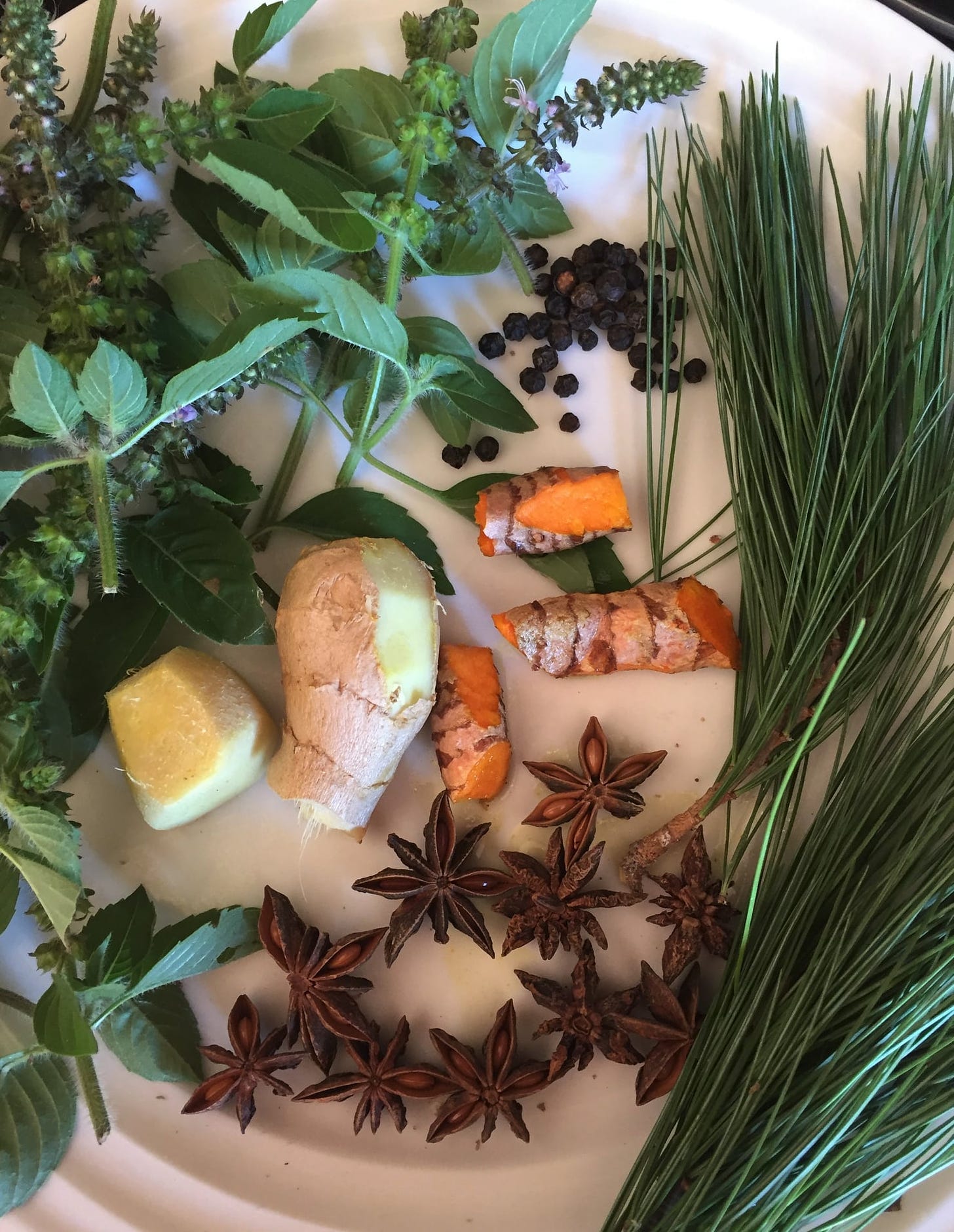
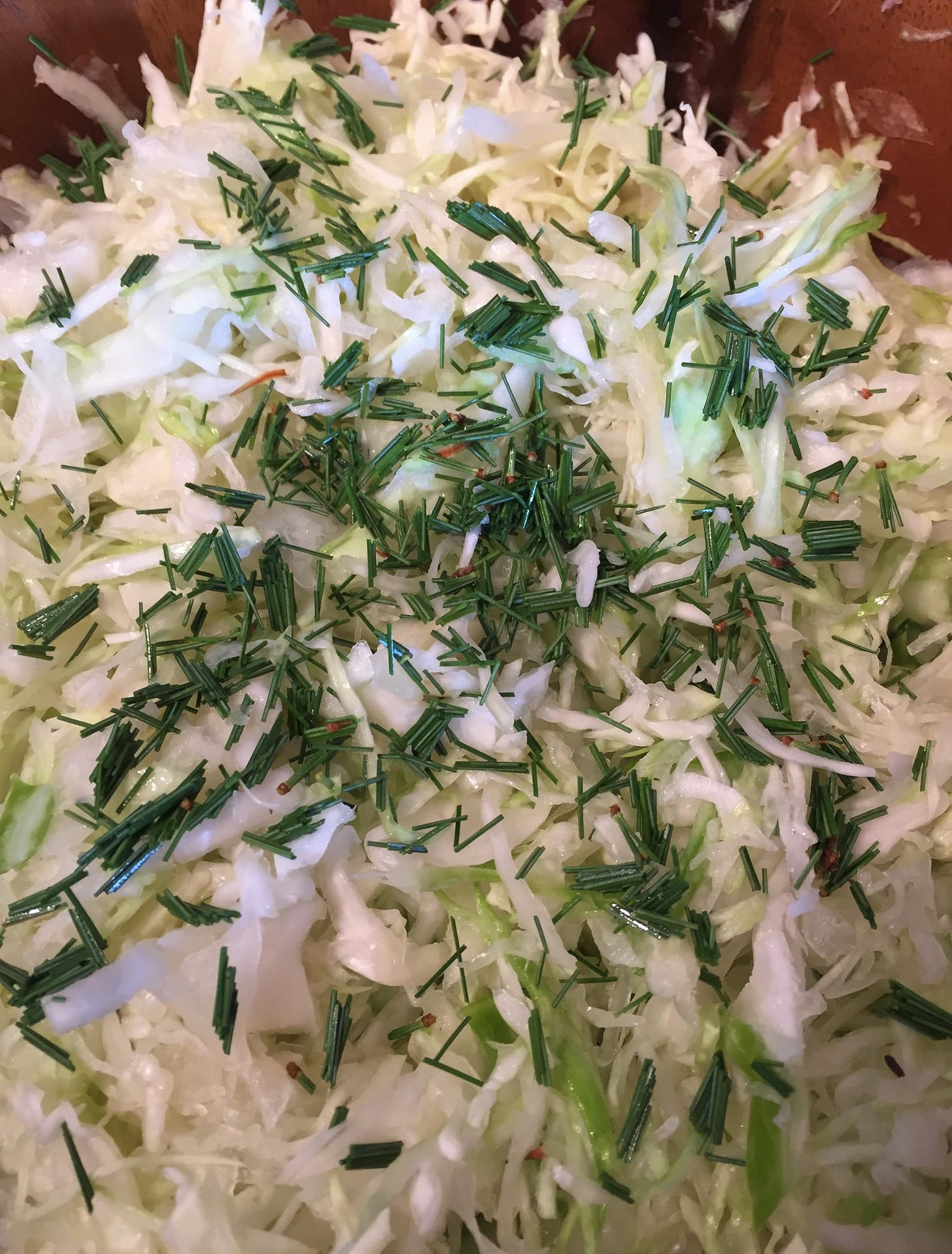
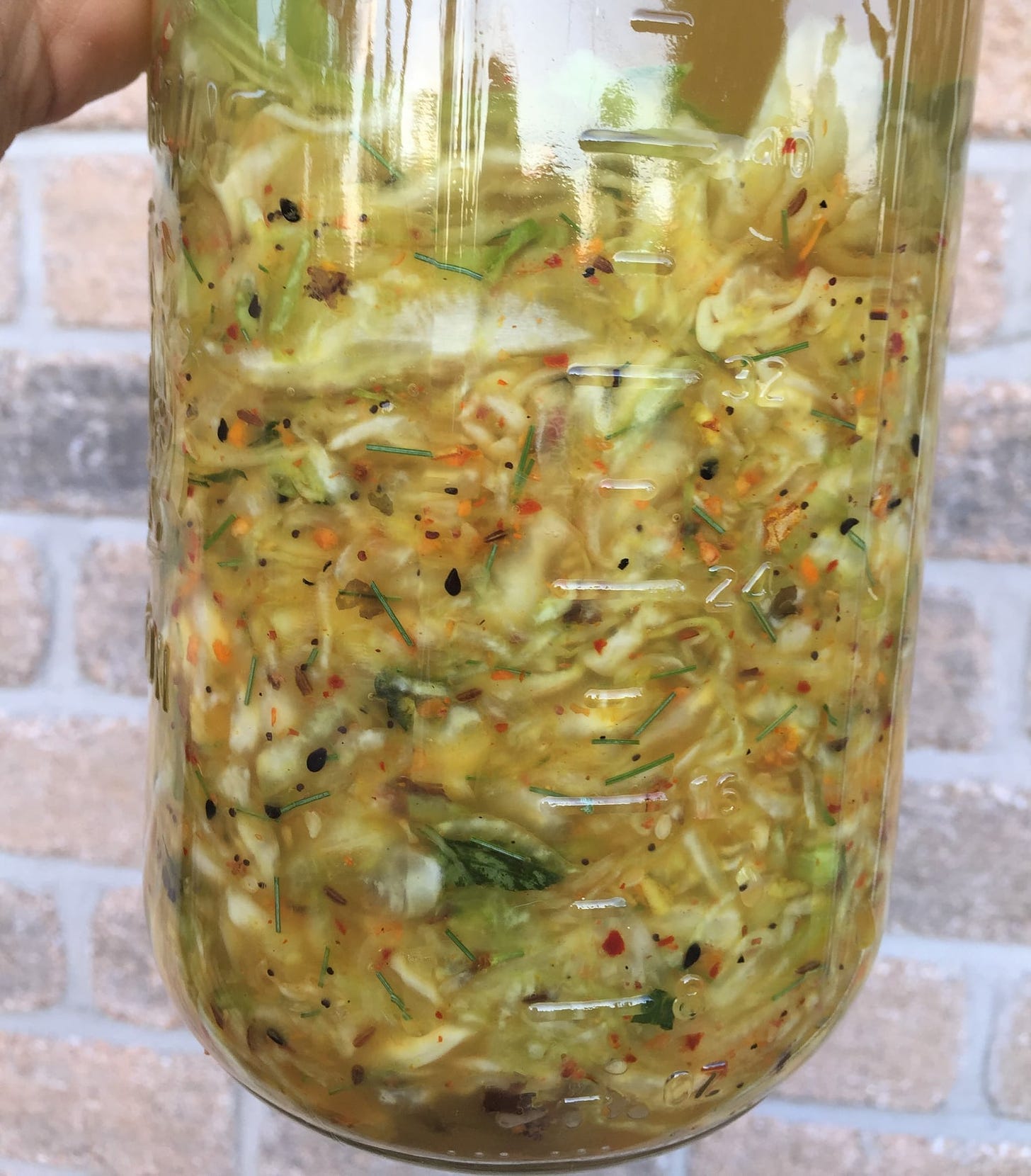
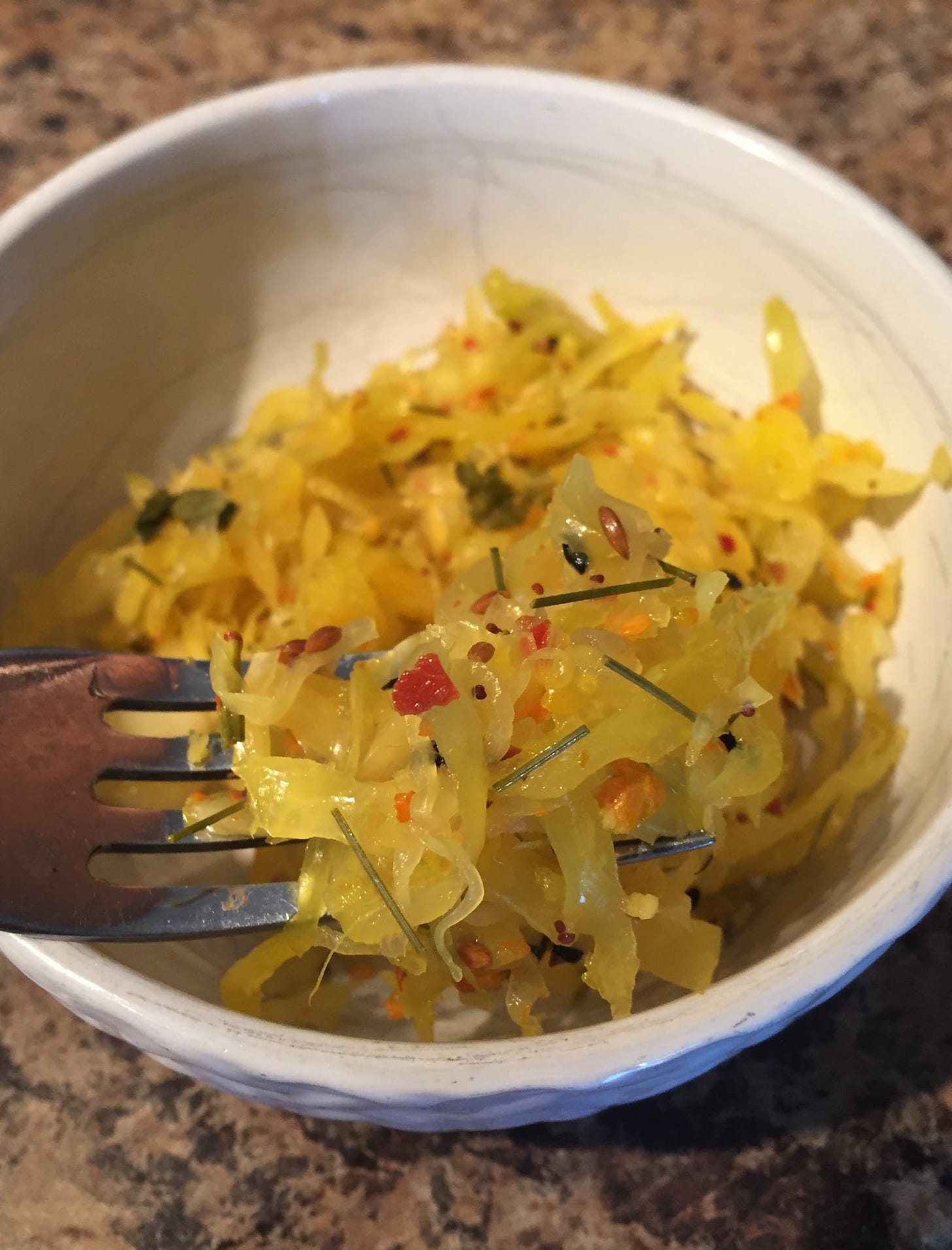
I have also experimented with using a cheap espresso machine to extract the essential oils/beneficial compounds from the needles after which combined with some other ingredients and made pine needle infused immune system optimizing ‘gummies’ (pics shown below)
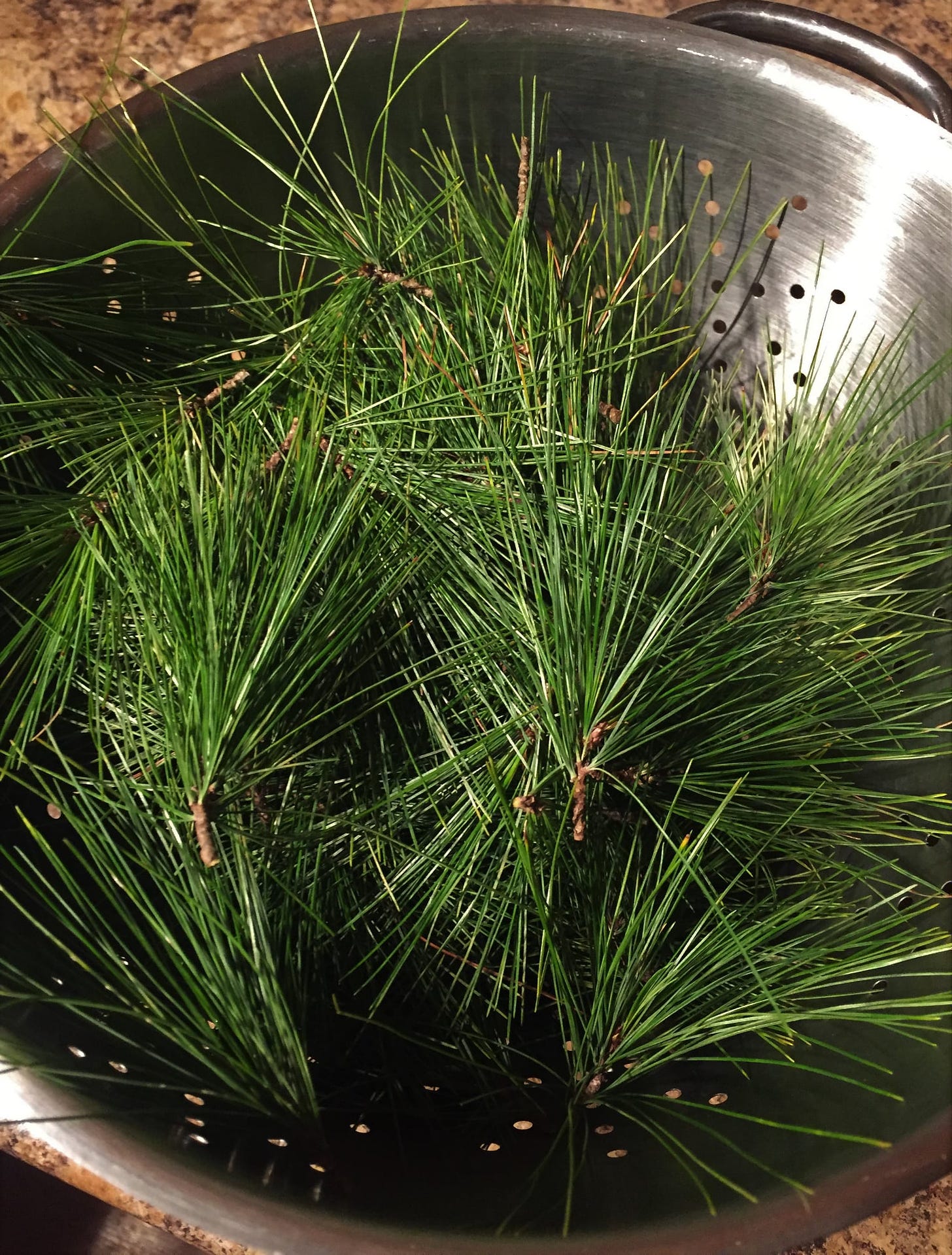




I began using an espresso machine to extract essential oils and other beneficial compounds after I came across two studies where researchers had utilized an off the shelf espresso machine to extract potent medicinal phytochemicals (such as Eugenol from Cloves and Shikimic Acid from Star Anise).
An espresso machine creates conditions similar to the conditions used in industrial essential oil extracting processes (pressurized hot water extraction at approx 90.5 to 96 degrees Celsius with water/steam at 7-15 bars of pressure).
https://pages.uoregon.edu/chendon/coffee_literature/2015%20Org.%20Lett.,%20Shikimic%20acid%20extraction%20from%20anise%20using%20espresso%20machine.pdf
That paper is published in Science Direct and was also published in Organic Letters in 2015, and appears as a PDF at the University of Oregon website.
From the abstract of that study:
ABSTRACT: A new, practical, rapid, and high-yielding process for the pressurized hot water extraction (PHWE) of multigram quantities of shikimic acid from star anise (Illicium verum) using an unmodified household espresso machine has been developed.
This operationally simple and inexpensive method enables the efficient and straightforward isolation of shikimic acid.
In other words, they are taking advantage of the pressurized chamber of an espresso machine to conduct a heat + pressure extraction of shikimic acid from star anise.
And then this second study using similar methods to extract another beneficial compound: https://www.scribd.com/document/475104899/37-11
I share this info relating to using off the shelf espresso machines to extract essential oils and beneficial phytochemicals so that any of you DIY-ers and intrepid herbalists/natural medicine enthusiasts out there can experiment with using this technique increase your ability to make powerful homemade medicines with your favorite herbs.
Ok, now back to the Eastern White Pine. :)
Evergreens like white pine can also be used to create nice, warming, circulatory stimulants- using the essential oils. They can be employed externally in massage oils, salt and sugar scrubs, and bath salts for this use and there’s nothing like an evergreen hot toddy made with an elixir and honey to warm the body up!
On an energetic level these trees are said to lift the spirits. They are said to have a warming and slightly energizing disposition and, especially when enjoyed in the winter months, can help keep spirits bright during the darkest days of the year. I believe that when we work with the local plants growing abundantly around us we begin to attune to and harmonize with our local landscape, ecosystem, and its rhythms (via naturally occurring exomic RNA that modulate our epigenetic expression). In other words when you consume native plants you are 'tuning in' with the Earth and her subtleties, seasonal shifts and more.
The needles can be collected anytime they are green, which is pretty much all year, including winter. In the fall they do lose some needles- some turn yellow and fall, while others stay green and intact- it is best to wait until after this fall shedding to collect. The needles, as well as thin twigs may be harvested together. Harvest the tips of the branches. Even better, collect dropped branches from the forest floor after a storm for the most sustainable harvest and or grow your own tree at home and harvest via pruning annually in a sustainable fashion (so the tree can both provide you will needles and provide habitat for local wild life).
White pine are important to wildlife. Beaver, hares, rabbits, porcupines, squirrels, mice, deer and several species of birds feed on white pine seeds, bark and needles. White pine stands also provide shelter for moose, bear, grouse, woodcock, songbirds, birds of prey and small mammals.
Mature White Pine cones also contain edible seeds (“pine nuts”). The pine nut you buy at the store is from pinyon pine (Pinus edulis) and while not as flavorful, white pine nuts are edible. But they are small. It’s a lot of work to open the cones and collect the teeny tiny nuts, which are in shells.
Collecting seed from white pines cones:
Gather white pine seeds in late summer after the long, curving cones dry out and the scales begin to lift.
Place the cones in a paper bag. Set the bag in a warm, dry spot outdoors for one week, or until the cones drop their seeds (or remove by hand if they are stuck).
Propagation of White Pine:
It is best to sow the seed in individual pots in a cold frame as soon as it is ripe if this is possible otherwise in late winter. A short stratification of 6 weeks at 4C can improve the germination of stored seed. Plant seedlings out into their permanent positions as soon as possible and protect them for their first winter or two. Plants have a very sparse root system and the sooner they are planted into their permanent positions the better they will grow. Trees should be planted into their permanent positions when they are quite small, between 30 and 90cm. We actually plant them out when they are about 5 - 10cm tall. So long as they are given a very good weed-excluding mulch they establish very well.
Cuttings: This method only works when taken from very young trees less than 10 years old. Use single leaf fascicles with the base of the short shoot. Disbudding the shoots some weeks before taking the cuttings can help. Cuttings are normally slow to grow away.
White Pine seeds as food:
White Pine seeds (or 'nuts' if you will) are usually a little smaller than store bought 'pine nuts' (and do require quite a bit of effort to extract from the cones unless you have specialized equipment or get inventive) but these are nevertheless a very worthwhile food that can be added to the long list of foods, medicines, materials and other useful compounds that Eastern White Pines can provide in the context of being part of a food forest design.
𝗘𝗮𝘀𝘁𝗲𝗿𝗻 𝗪𝗵𝗶𝘁𝗲 𝗣𝗶𝗻𝗲 𝘀𝗲𝗲𝗱𝘀 𝗰𝗼𝗻𝘁𝗮𝗶𝗻 𝗺𝗲𝗮𝗻𝗶𝗻𝗴𝗳𝘂𝗹 𝗾𝘂𝗮𝗻𝘁𝗶𝘁𝗶𝗲𝘀 𝘁𝗵𝗲 𝗳𝗼𝗹𝗹𝗼𝘄𝗶𝗻𝗴 𝗻𝘂𝘁𝗿𝗶𝗲𝗻𝘁𝘀 𝗮𝗻𝗱 𝗯𝗲𝗻𝗲𝗳𝗶𝗰𝗶𝗮𝗹 𝗰𝗼𝗺𝗽𝗼𝘂𝗻𝗱𝘀: Lutein, Zeaxanthin, Vitamin E (tocopherol- alpha and Tocopherol-gamma), Calcium, Copper, Selenium, Vitamin C, Thiamin, Riboflavin, Niacin, Pantothenic acid, Vitamin B-6, Folate, Choline, beta-Carotene, Beta-sitosterol, Tryptophan, Threonine, Isoleucine, Lysine, Phenylalanine, Tyrosine, Valine, Glutamic acid, Glycine and fiber.
I was not able to find information on whether or not the seeds contain Shikimic Acid (as the foliage and bark does) but it seems likely to me that they would given a seed is a template for all those parts of the adult tree to form.
In addition to what was listed above, one serving of white pine seeds (28 grams) contains:
-169 milligrams of potassium (4% of the daily value)
-9 grams of protein (7% of the daily value)
-1 milligrams of thiamin (7% of the daily value)
-6 milligrams of iron (8% of the daily value)
-7 milligrams of vitamin E (9% of the daily value)
-8 milligrams of zinc (12% of the daily value)
-163 milligrams of phosphorus (16% of the daily value)
-71 milligrams of magnesium (18% of the daily value)
-3 micrograms of vitamin K (19% of the daily value)
Some of the Health benefits offered by eating White Pine Seeds include:
1. Promoting heart health:
Pinolenic acid is a polyunsaturated fatty acid isolated exclusively in pine seed oils.
Pinolenic acid may help lower LDL cholesterol levels in the blood. Rat studies have suggested that pinolenic acid causes the liver to take up and metabolize more LDL cholesterol from the blood
2. Enhancing Brain Health:
As stated above, White Pine seeds are rich in iron, which is a mineral required for storing and transporting oxygen. However, iron is also important for brain health too.
Also, research shows that other nutrients in White Pine seeds, like magnesium, can help treat anxiety, depression, and stress. One study proved that dietary intake of magnesium could help improve the condition of adolescents with depression and anxiety disorders. Higher levels of magnesium can lead to lesser emotional outbursts and other behaviors associated with mood disorders
3. Lowers Cancer Risk:
The cancer health benefits of White Pine seeds can be attributed to their magnesium content. This mineral has been linked to a lower risk of various types of cancer. One study shows that a decrease in serum magnesium by 100 milligrams per day can increase the risk of pancreatic cancer risk by 24 percent. Therefore, increasing your blood magnesium levels may help to lower such risk.
4. Strengthening Bones
Calcium is well-known for its bone health benefits. Did you know, though, that vitamin K can help bones too? One study talks about how this vitamin can help in the treatment and prevention of osteoporosis. It not only increases bone mineral density but also reduces fracture rates.
And here’s something quite interesting. One very common reason for the deficiency of vitamin K is the intake of cholesterol-lowering pharmaceuticals. But when you take White Pine seeds, you may not need any cholesterol-lowering medication since the nuts have cholesterol-lowering potential, not to mention that they provide a rich source of vitamin K.
5. Boosts Immunity:
The manganese and zinc in White Pine seeds can do a great job at boosting immune health. While the former helps maintain the body’s hormonal balance and strength of connective tissue, the latter boosts immunity and aids wound healing.
As per one report, additional zinc in the diet can help boost the immune system in older adults. Zinc is associated with an improvement in the function and number of T-cells, which are a type of white blood cells that destroy invading pathogens
6. Improves Vision Health:
White Pine seeds contain a lot of lutein, which is an antioxidant also known as the eye vitamin. Several surveys have revealed that most Americans taking the Standard American Diet don’t consume adequate amounts of lutein.
There are about 600 carotenoids your body can utilize, of which only about 20 are transported to your eyes. Of these, only two are deposited in your eyes in large amounts. One is lutein, and the other is zeaxanthin. Both these nutrients help prevent macular degeneration and glaucoma by fighting free radical damage.
7. Enhances Skin And Hair Health:
High concentrations of various essential vitamins, minerals, and antioxidants make White Pine seeds amazingly helpful for skin care. Vitamin E and antioxidants work to hold back the aging process. And thanks to its anti-inflammatory properties, White Pine seed oil is very suitable for sensitive skin types. It nourishes the skin and protects it from various common conditions. Moreover, it also has great moisturizing effects on the skin.
Pine nut oil is well known for massage therapy because of its healing property, White Pine seed oil offers the same benefits. It helps to reduce a number of skin issues like itching, psoriasis, pimples, eczema, scabies, and sores. This nut oil gives the skin a revitalized and fresh look.
In addition, White Pine seeds contain a high concentration of proteins. The protein content in the nuts protects the hair against damage and keeps it strong, healthy, and lustrous.
Foraging For Pine Needles:
The needles can be collected anytime they are green, which is pretty much all year, including winter. In the fall they do lose some needles- some turn yellow and fall, while others stay green and intact- it is best to wait until after this fall shedding to collect. The needles, as well as thin twigs may be harvested together. Harvest the tips of the branches. Even better, collect dropped branches from the forest floor after a storm for the most sustainable harvest and or grow your own tree at home and harvest via pruning annually in a sustainable fashion (so the tree can both provide you will needles and provide habitat for local wild life). White pine are important to wildlife. Beaver, hares, rabbits, porcupines, squirrels, mice, deer and several species of birds feed on white pine seeds, bark and needles. White pine stands also provide shelter for moose, bear, grouse, woodcock, songbirds, birds of prey and small mammals.
A few notes of caution when foraging for pine needles: Be careful with the yew 'pine' (which is not a true pine) and can be toxic, although it does have a few medicinal properties). The cypress is not to be used as an essential oil in high doses, but normally safe otherwise. The Ponderosa pine is not good for cows mostly due to the observation when pregnant cattle eat the needles the loss of the calf has been observed, but has a long history of health benefits for humans for respiratory conditions, cuts, wounds, and burns, etc. By far the vast majority of conifers have been used medicinally for thousands of years with an excellent track record. Get to know your trees. They may provide a medicine cabinet full of health benefits to you and your family. Pine, spruce, cedar, and fir needle tea may end up being the easiest way to gain the numerous benefits of the evergreen trees, along with a natural protection against unhealthy replications of spike proteins today. Combine with other herbs as desired to obtain further benefits and flavors.
More info on Foraging for Pine Needles (and other conifer needles): https://www.growforagecookferment.com/foraging-for-pine-needles/ (I took the picture above in Algonquin Park, Ontario, 2021)
𝗣𝗶𝗻𝗲 (𝗮𝗻𝗱 𝗦𝗽𝗿𝘂𝗰𝗲) 𝗣𝗼𝗹𝗹𝗲𝗻 𝗡𝘂𝘁𝗿𝗶𝘁𝗶𝗼𝗻 𝗮𝗻𝗱 𝗛𝗲𝗮𝗹𝘁𝗵 𝗕𝗲𝗻𝗲𝗳𝗶𝘁𝘀
Pine and Spruce Pollen has over 200 bioactive compounds:
Including phytoandrogens, antioxidants, flavinoids, essential amino acids, vitamins and minerals – including:
– Brassinosteroids: bio-idential DHEA and testosterone
– Glutathione
– 20+ Amino acids (complete profile)
– MSM (methylsulfonylmethane)
– Superoxide Dismutase (anti-inflammatory)
– Vitamins: C, D, E and B’s
– Calcium, magnesium, potassium, silicon, copper,
manganese, molybdenum, selenium, zinc
The pollen grain carries everything it needs for germination. 15% amino acids, 1-2% lipids-sterols, various polyphenols and antioxidants, including 2% flavonoids, myoinositol, phosphatidylcholine, phosphatidylethanolamine, phosphatidylglycerol, phosphatidylserine, lignin, and various polysaccharides (complex sugars)—two of which are vital to immune health; arabinogalactan, and xylogalacturonan and on top of that boasts liver detoxifying agents like glutathione, MSM, SOD.
It also has vitamin D2/D3, magnesium, selenium, silicon, potassium, calcium, iron, strontium, phosphorus, sulphur, chlorine, manganese, and various other vitamins, minerals, and essential amino acids such as L-dopa and Arginine that help with blood flow and the nitric-oxide cycle.
Pine pollen health benefits come from a huge number of bioactive molecules needed for germination.
Pine pollen also has five other potent plant hormone compounds, required for germanaiton burst: Auxins, Cytokinins, Gibberellins, Ethylene, Abscisic acid- all with biological activity, such as; antiviral, anti-cancer, anabolic, pro-survival, stem cell/immune response activation, and anti-aging effects.
Cooking with pine pollen:
https://foragerchef.com/pine-pollen/
Related research and studies regarding the health and medicinal benefits offered by pine needles and the compounds they contain:
Antioxidant activity and analysis of proanthocyanidins from pine needles:
- https://www.ncbi.nlm.nih.gov/pmc/articles/PMC7153330/
- https://www.ncbi.nlm.nih.gov/pmc/articles/PMC7827367/
Shikimic acid as intermediary model for the production of drugs effective against influenza virus (2020):
- https://link.springer.com/article/10.1007/s10482-014-0340-z
Shikimic acid, a base compound for the formulation of swine/avian flu drug: along with its application as an antibacterial agent
- https://onlinelibrary.wiley.com/doi/abs/10.1111/jocd.14136
Shikimic acid in the light of current knowledge:
- https://www.dovepress.com/current-perspectives-on-applications-of-shikimic-and-aminoshikimic-aci-peer-reviewed-fulltext-article-RRMC
Current perspectives on applications of shikimic and aminoshikimic acids in pharmaceutical chemistry :
- https://www.sciencedirect.com/science/article/abs/pii/S027869150900266X
Anti-platelet and anti-thrombogenic effects of shikimic acid in sedentary population:
https://pubmed.ncbi.nlm.nih.gov/27480079/
Content Analysis of Shikimic Acid in the Masson Pine Needles and Antiplatelet-aggregating Activity:
Comparative Evaluation of Physicochemical Properties of Pine Needle Powders Prepared by Different Drying Methods:
https://www.ncbi.nlm.nih.gov/pmc/articles/PMC4500518/
Quantitative Changes of Flavonol Glycosides from Pine Needles by Cultivar, Harvest Season, and Thermal Process:
https://www.ncbi.nlm.nih.gov/pmc/articles/PMC8027044/
“Effect of extracts from pine needle against oxidative DNA damage and apoptosis induced by hydroxyl radical via antioxidant activity” (2009):
- https://assets.researchsquare.com/files/rs-99513/v1_covered.pdf?c=1631846105
"Structural basis for repurposing a 100-years-old drug suramin for treating COVID-19." (2020):
- https://www.biorxiv.org/content/10.1101/2020.10.06.328336v1 - https://pubmed.ncbi.nlm.nih.gov/32513797/
“Suramin Inhibits SARS-CoV-2 Infection in Cell Culture by Interfering with Early Steps of the Replication Cycle” (2020):
- https://www.ncbi.nlm.nih.gov/pmc/articles/PMC7526844/
Ten Health Benefits Of Pine Needle Tea:
- https://familyhealthadvocacy.com/10-unbelievable-things-you-never-knew-about-pine-needle-tea/?fbclid=IwAR234rgOMPpYvF2I3QCD98uEGstJce7n4d_EhyUjzbb3ry_637UNU2CW524 - https://pubmed.ncbi.nlm.nih.gov/28461070/
Suramin inhibits Zika virus replication by interfering with virus attachment and release of infectious particles (2017):
- https://www.nature.com/articles/s41594-021-00570-0?fbclid=IwAR3cBMT63HtNrXFpMudmSYImYhTnB3ALhDNvPR6Bwlp0NCalZ8eExVz8KH0
Henß, L. et al. Suramin is a potent inhibitor of Chikungunya and Ebola virus cell entry. Virol J 13, 149 (2016):
- https://www.ncbi.nlm.nih.gov/pmc/articles/PMC4185360/
suramin identified as a clinical candidate for the treatment of EV71 infection—suramin inhibits EV71 infection in vitro and in vivo : https://www.ncbi.nlm.nih.gov/pmc/articles/PMC7294092/
Suramin exposure alters cellular metabolism and mitochondrial energy production in African trypanosomes :
https://www.ncbi.nlm.nih.gov/pmc/articles/PMC3951423/
Structural Bases of Norovirus RNA Dependent RNA Polymerase Inhibition by Novel Suramin-Related Compounds : https://www.ncbi.nlm.nih.gov/pmc/articles/PMC6362832/
Repurposing suramin for the treatment of breast cancer lung metastasis : https://www.ncbi.nlm.nih.gov/pmc/articles/PMC3103726/
Suramin Inhibits Renal Fibrosis in Chronic Kidney Disease - https://www.koreascience.or.kr/article/JAKO199324457070772.page
Mooon, Jeong-jo, Young-bok Han, and Jin-suk Kim. "Studies on antitumor effects of pine needles, Pinus densiflora Sieb. et Zucc." Korean Journal of Veterinary Research 33, no. 4 (1993): 701-710:
-https://pubmed.ncbi.nlm.nih.gov/16411766/
Understanding the mechanism of the antimitogenic activity of suramin :
- https://www.ncbi.nlm.nih.gov/pmc/articles/PMC4241895/
You can read more about the history of Suramin – One of the active components of White Pine Needles here:
-https://archives.simplelists.com/nfu/msg/16539359/ -
Eastern White Pine Tree Needles: A Natural Source of Anti-Infective Compounds :
-https://www.biologicalmedicineinstitute.com/post/eastern-white-pine-tree-needles-a-natural-source-of-suramin -
-Betsholtz, Christer, Ann Johnsson, Carl-Henrik Heldin, and Bengt Westermark. "Efficient reversion of simian sarcoma virus-transformation and inhibition of growth factor-induced mitogenesis by suramin."
-Proceedings of the National Academy of Sciences 83, no. 17 (1986): 6440-6444. - Coffey Jr, Robert J., Edward B. Leof, Gary D. Shipley, and Harold L. Moses. "Suramin inhibition of growth factor receptor binding and mitogenicity in AKR‐2B cells."
-Journal of cellular physiology 132, no. 1 (1987): 143-148. - Sartor, Oliver, Catherine A. McLellan, Charles E. Myers, and M. M. Borner. "Suramin rapidly alters cellular tyrosine phosphorylation in prostate cancer cell lines."
-The Journal of clinical investigation 90, no. 6 (1992): 2166-2174. - Hosang, Markus. "Suramin binds to platelet‐derived growth factor and inhibits its biological activity."
-Journal of cellular biochemistry 29, no. 3 (1985): 265-273 - Spigelman, Zachary, Amy Dowers, Susan Kennedy, Dennis DiSorbo, Michael O'Brien, Ronald Barr, and Ronald McCaffrey. "Antiproliferative effects of suramin on lymphoid cells."
-Cancer research 47, no. 17 (1987): 4694-4698. - Stein, C. A., R. V. LaRocca, R. Thomas, N. McAtee, and Charles E. Myers. "Suramin: an anticancer drug with a unique mechanism of action."
-Journal of Clinical Oncology 7, no. 4 (1989): 499-508. - Myers, Charles, Michael Cooper, Cy Stein, Renato LaRocca, M. M. Walther, Gary Weiss, Peter Choyke, Nancy Dawson, Seth Steinberg, and Margaret M. Uhrich. "Suramin: a novel growth factor antagonist with activity in hormone-refractory metastatic prostate cancer."
-Journal of clinical oncology 10, no. 6 (1992): 881-889. - Kartnig, Theodor, Franz Still, and Franz Reinthaler. "Antimicrobial activity of the essential oil of young pine shoots (Picea abies L.)."
-Journal of ethnopharmacology 35, no. 2 (1991): 155-157.
PINE POLLEN RESEARCH (mostly pertaining to medicinal/nutritional benefits for humans):
– The Potential Effects and Use of Chinese Herbal Medicine Pine Pollen (Pinus pollen): A Bibliometric Analysis of Pharmacological and Clinical Studies (World J Tradit Chin Med. Shi-Bing Liang 2021 Jul 28.)
– Clinical study of chrome-rich pine pollen in the treatment of type 2 diabetes, (Fang Zhaohui, see Translation 2019)
– Analysis of pharmacological effects and clinical application of pine pollen. (Sheng wise et al, 2018)
– Effects of Pine Pollen Extract in Relieving Hot Flushes in Sex Hormone-Deficienct Rats. (Thisayakorn, 2017)
– Androgenic and Anabolic Effects of Pinus tabulaeformis Carr Pollen in Clarias gariepinus. (Ausussto S Jr, 2017)
– Plant Hormone Cytokinins for Modulating Human Aging and Age-Related Diseases. (Jiří Voller, 2017)
– The Plant Hormone Abscisic Acid is a Prosurvival Factor in Human and Murine Megakaryocytes. (Malara A, 2017)
– Immune-Enhancing Effects of Taishan Pinus massoniana Pollen Polysaccharides on DNA Vaccine Expressing Bordetella avium ompA (Fujie Zhu, 2016)
– Effect of pine pollen extract on experimental chronic arthritis; (Axenov-Gribanov DV, 2016)
– Analysis of human food safety and laxative function of pine pollen Wen Ping Jing, 2016)
– The protective effects of Masson pine pollen aqueous extract on CCl4-induced oxidative damage of human hepatic cells. Jin X, 2015)
– Characterization and Biological Activity of Taishan Pinus massoniana Pollen Polysaccharide In Vitro (Shifa Yang, 2015)
– Actinobacteria possessing antimicrobial and antioxidant activities isolated from the pollen of scots pine; (Gen-Xiang Mao, 2012)
– Antiaging Effect of Pine Pollen in Human Diploid Fibroblasts and in a Mouse Model Induced by D-Galactose (Gen-Xiang Mao, 2012)
– Pine pollen inhibits cell apoptosis-related protein expression in the cerebral cortex of mice with arsenic poisoning, Yanhong Luo, 2012)
– Mechanisms of natural brassinosteroid-induced apoptosis of prostate cancer cells. Steigerová J, Food Chem Toxicol. 2012)
– Brassinosteroids inhibit in vitro angiogenesis in human endothelial cells (LucieRárová, 2012)
– Brassinosteroids and analogs as neuroprotectors: Synthesis and structure–activity relationships Author (JihaneIsmaili, 2012)
Rapid effects of novel phytoandrogen adjuvant therapy (PAT) onmetabolic health: a gender, age and BMI matched case-control study (Ong YC, 2011)
– Anabolic effect of plant brassinosteroids. (Debora Esposito, 2011)
– Oxidative activation of indole-3-acetic acids to cytotoxic species— a potential new role for plant auxins in cancer therapy. (Lisa K.Folkes, 2011)
– Brassinosteroids cause cell cycle arrest and apoptosis of human breast cancer cells. (Steigerová, 2010)
– Anti-fatigue Effects of Flavone in Pinus Massoniana Pollen on Mice (WU Jing-jing,2010)
– Antioxidant and antiinflammatory activity of pine pollen extract in vitro. (Lee KH. (2009) – Model Induced by D-Galactose Pine pollen polly-sacchrided on reactive oxygen species,(Lee KH1,2009)
– The phytohormone auxin induces G1 cell-cycle arrest of human tumor cells. (Ester K, 2009)
– Allergenicity and cross-reactivity of pine pollen. (Gastaminza G, et al. ,2009)
– Anticancer and antiproliferative activity of natural brassinosteroids (JanaMalíková, 2008)
– Abscisic acid is an endogenous stimulator of release from human pancreatic islets with cyclic ADP ribose as second messenger. Bruzzone S, 2008)
– Antinociceptive and anti-inflammatory activities of pine (Pinus densiflora) pollen extract. ( Wang YM, 2007)
– Effects of pine pollen polysaccharide and its sulfate on the production of ROS in cardiomyocytes (Geng Yue, 2007)
– Effective Components and Pharmacological Function of Pine Pollen (He Xiaoyan, 2007)
– Chen Wei; Study on Extraction and Determination of Choline in Pine Pollen ( Li Ying ;2006)
– Pine pollen hits cell defense Yan Zhenli, 2006)
– Analysis of pine pollen by using FTIR, SEM and energy-dispersive X-ray analysis. (Guang Pu, 2005)
– Interventional effects of pine pollen in rats with hyperplasia of prostate, (T. Cong, 2005)
– Analysis of pharmacological effects and clinical application of pine pollen in combination with other Chinese patent formulas in clinical trials. (In benign prostatic hyperplasia: Wang Fuchang, 2004, and in primary hypertention, Hu Guocan et al 2005)
More info on Identifying Conifer Species and Foraging for Pine Needles (and other conifer needles):
https://www.growforagecookferment.com/foraging-for-pine-needles/
and https://outforia.com/types-of-pine-trees/
The new growth tips of many conifers (including but not limited to all spruce species, white pine and balsam fir) are edible and packed full of not only enthralling forest flavors but also a potent dose of Vitamin C, Flavonoids (e.g., kaempferol, quercetin, isorhamnetin, and myricetin) Carotenoids, Shikimic Acid (as described above, it is a compound with antiviral properties and the capability of mitigating the deleterious side effects of the synthetic mRNA injection initiated spike proteins), condensed tannins, stilbenes. terpenoids and minerals such as potassium and magnesium. Due to the richness of vitamin C and phenolics, spruce tips (young new growth shoots) and mature needles have shown powerful antioxidative activity. Spruce tips are also rich in chlorophyll, an excellent nutrient for tissue regeneration and oxygenation. Chlorophyll also scavenges free radicals, accelerates wound healing and detoxes heavy metals from the body.
The First Nation peoples of Canada, Southeast Alaskans, Norwegians, and Russians have used young Spruce Tips for thousands of years as a healing forest food/medicine.
Spruce tips (either eaten fresh, in a tea or in an infusion like a syrup) provide a burst of energy without jitters or anxiety. Spruce Tip tea reduces coughing and removes mucus from the airways and lungs. Inhaling the steam from a fresh cup of Spruce Tip tea is also an effective administration route, especially for coughs that won’t quit..
Other Trees with edible needles that offer the medicinal compounds .listed above include (but are not limited to):
Western White Pine (Pinus monticola)
It occurs in mountain ranges of northwestern North America. It is the state tree of Idaho and is sometimes known as the Idaho pine.
Japanese/Korean Red Pine (Pinus densiflora)
Pinus densiflora occurs in Korea and Japan, as well as parts of China and Russia, and has been given the name red pine thanks to its attractive red-orange bark.
Scot's Pine aka “Baltic pine” (Pinus sylvestris)
Pinus sylvestris is a species of tree in the pine family Pinaceae that is native to Eurasia, ranging from Western Europe to Eastern Siberia, south to the Caucasus Mountains and Anatolia, and north to well inside the Arctic Circle in Fennoscandia
Dwarf Mountain Pine aka “Mugo Pine” (Pinus mugo)
a species of conifer, native to high elevation habitats from southwestern to Central Europe and Southeast Europe.
Red Spruce (Picea rubens)
a species of spruce native to eastern North America, ranging from eastern Quebec and Nova Scotia, west to the Adirondack Mountains and south through New England along the Appalachians to western North Carolina.
Black Spruce (Picea mariana)
is a North American species of spruce tree in the pine family. It is widespread across Canada, found in all 10 provinces and all 3 territories. It is the official tree of the province of Newfoundland and Labrador and is that province's most numerous tree. The range of the black spruce extends into northern parts of the United States: in Alaska, the Great Lakes region, and the upper Northeast. It is a frequent part of the biome known as taiga or boreal forest.
Balsam Fir (Abies balsamea)
a North American fir, native to most of eastern and central Canada (Newfoundland west to central Alberta) and the northeastern United States (Minnesota east to Maine, and south in the Appalachian Mountains to West Virginia).
Tamarack aka “Larch” (Larix laricina)
a species of larch native to Canada, from eastern Yukon and Inuvik, Northwest Territories east to Newfoundland, and also south into the upper northeastern United States from Minnesota to Cranesville Swamp, West Virginia; there is also an isolated population in central Alaska.[4] The word akemantak is an Algonquian name for the species and means "wood used for snowshoes".
White Spruce (Picea glauca)
a species of spruce native to the northern temperate and boreal forests in North America. Picea glauca is native from central Alaska all through the east, across southern/central Canada to the Avalon Peninsula in Newfoundland, and south to Montana, Minnesota, Wisconsin, Michigan, Vermont, New Hampshire, New York and Maine; there is also an isolated population in the Black Hills of South Dakota and Wyoming.
Norway Spruce (Picea abies)
This widespread species dominates the Boreal forests in Northern Europe and the subalpine areas of the Alps and Carpathian Mountains. Thanks to its high performances in different site conditions, it can also be found outside its natural distribution on lower elevations in more temperate forests.
Japanese red pine (Pinus densiflora)
It has a home range that includes Japan, the Korean Peninsula, northeastern China (Heilongjiang, Jilin, Liaoning, Shandong) and the extreme southeast of Russia (southern Primorsky Krai). This pine has become a popular ornamental and has several cultivars, but in the winter it becomes yellowish. The height of this tree is 20–35 metres (66–115 feet). The plant prefers full sun on well-drained, slightly acidic soil. In Japan it is known as akamatsu (赤松, literally "red pine") and mematsu (雌松).
Here are some links to studies pertinent to Spruce nutritional content and medicinal compounds (this information also applies to White Pine needles):
- https://www.nutriplanet.org/2014/05/5-reasons-to-eat-spruce-tips-8-ways-to-use-them/#:~:text=Spruce%20needles%20are%20exceptionally%20high,relieving%20coughs%20and%20sore%20throats.
- https://www.ncbi.nlm.nih.gov/pmc/articles/PMC7570650/
- https://link.springer.com/chapter/10.1007/978-94-011-0455-5_35
- https://www.researchgate.net/figure/Concentration-of-shikimic-acid-in-spruce-needles_fig2_336003783
- https://iopscience.iop.org/article/10.1088/1755-1315/316/1/012048/pdf
I recently experimented with preserving the nutritional content and medicinal compounds found in norway spruce, white pine and balsam fir new growth shoots via making a fermented syrup.
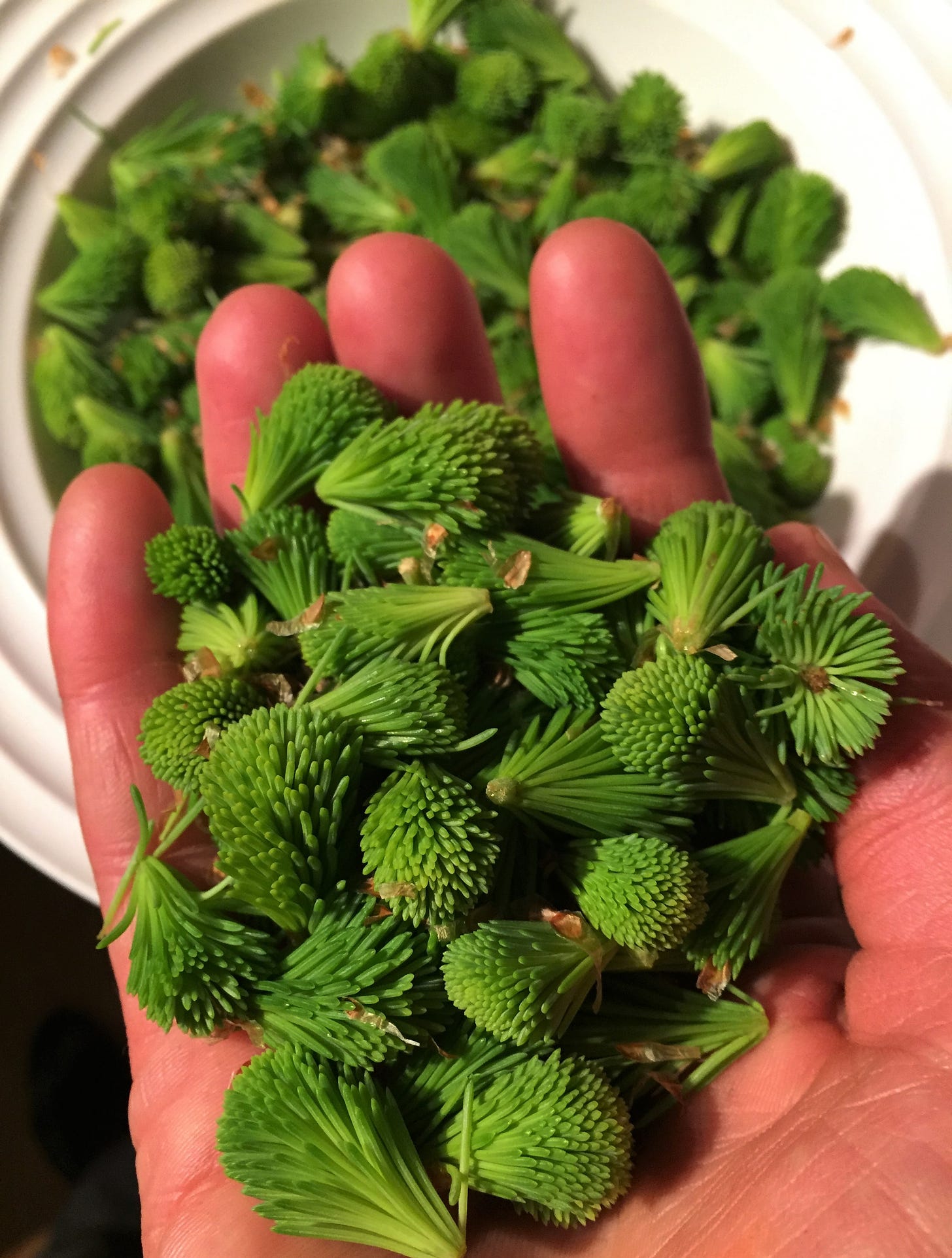
For this recipe you simply harvesting some of the new growth tips (in a way that does not impact the health and longevity of the tree) and then you combine with an equal volume of organic sugar (I used mostly brown sugar as the moisture content is important but I also added on a portion of maple sugar for a fun twist) in a jar.
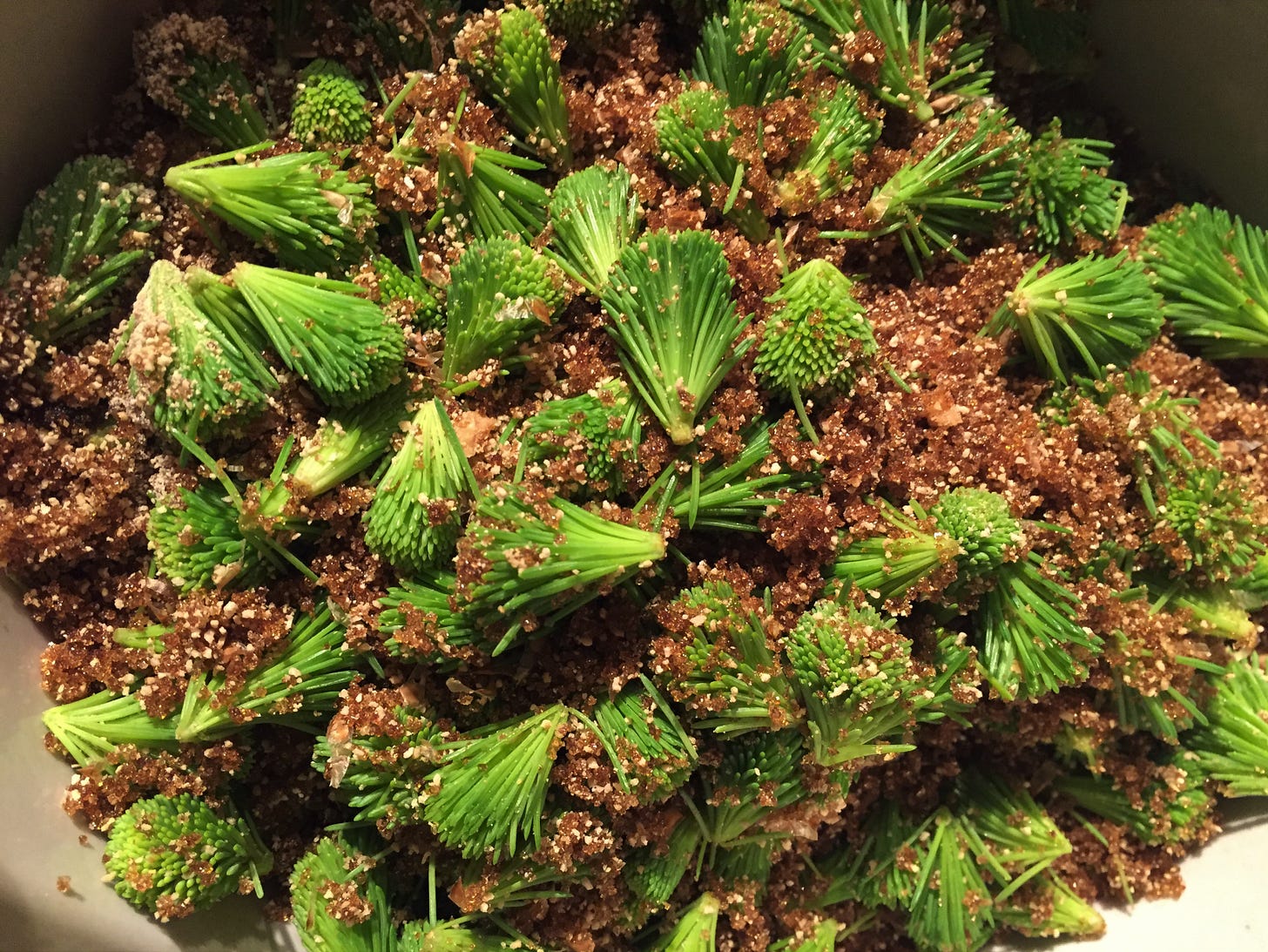
I then let the jar sit at room temp in a dark place (allowing the sugar to draw out the water from the spruce tips to initiate fermentation, adding a little water if needed for getting the ferment bubbling).
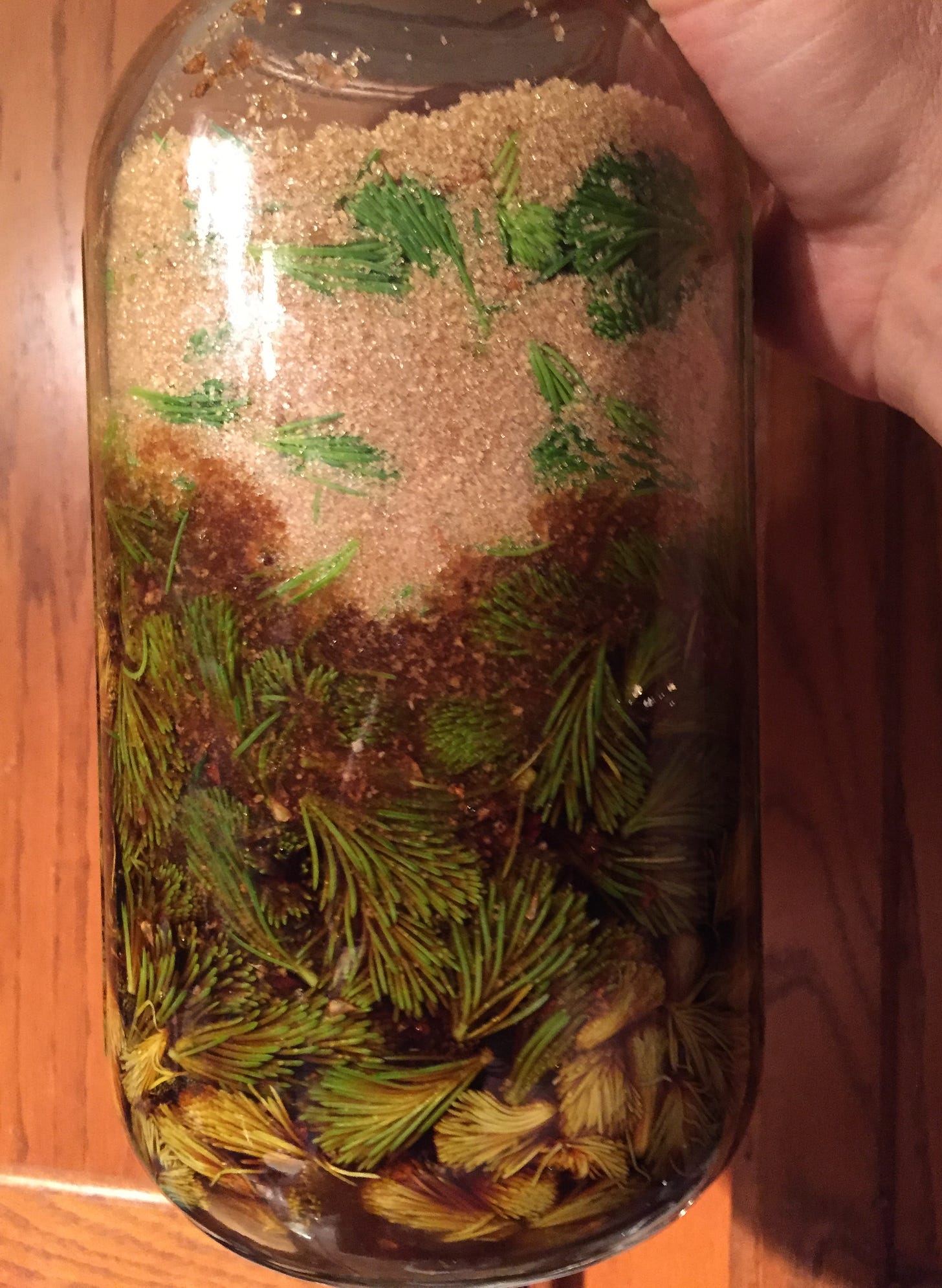
After this heavenly smelling mixture bubbled and aged for about a month
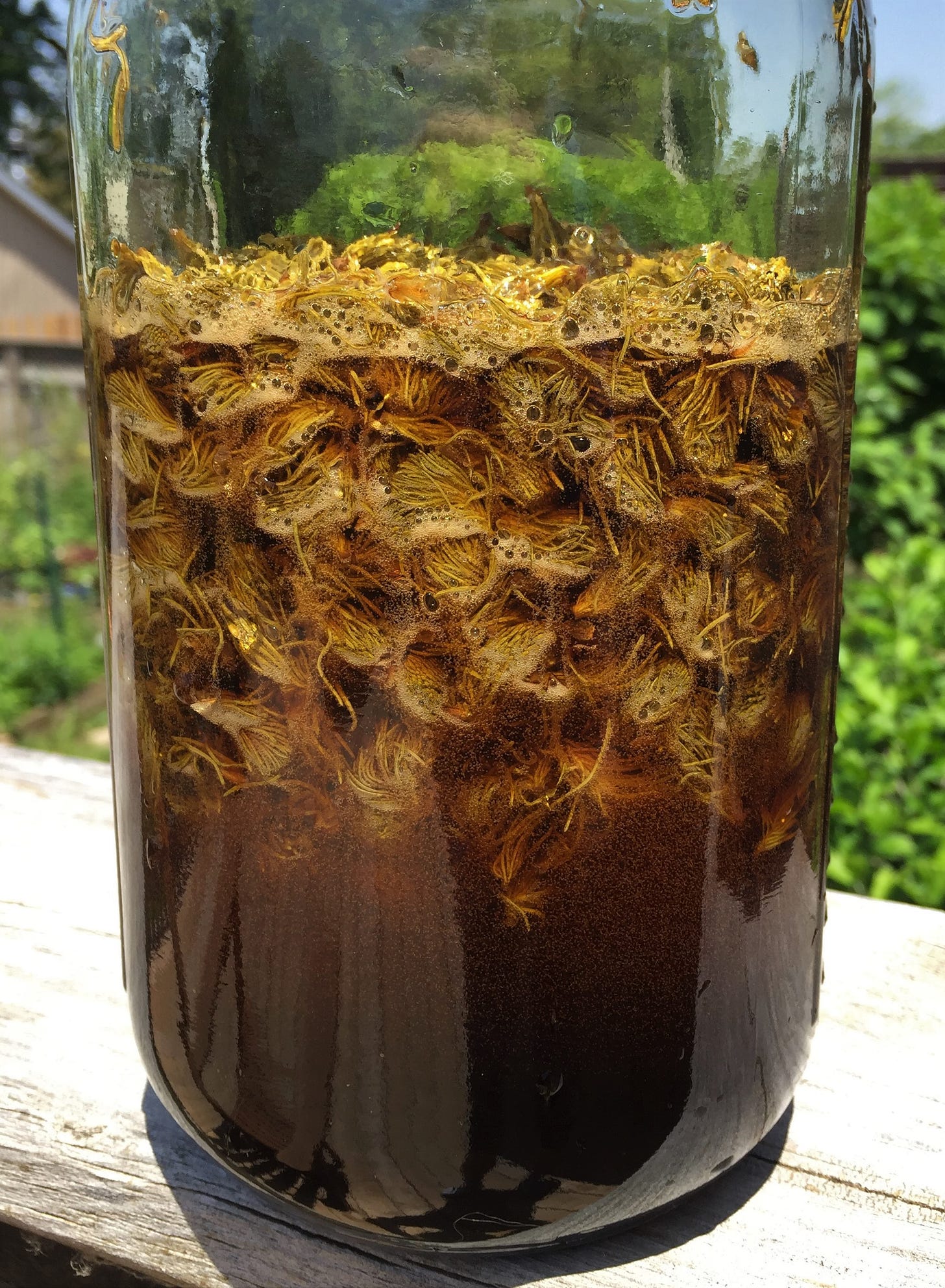
I brought the mixture to a boil and strained out the plant material and then jared it. The result was a fragrant and forest essence infused syrup with a low PH (making it shelf stable) which is packed with vitamins, immune system optimizing compounds and carrying the enchanting flavor/fragrance of an alpine evergreen forest.
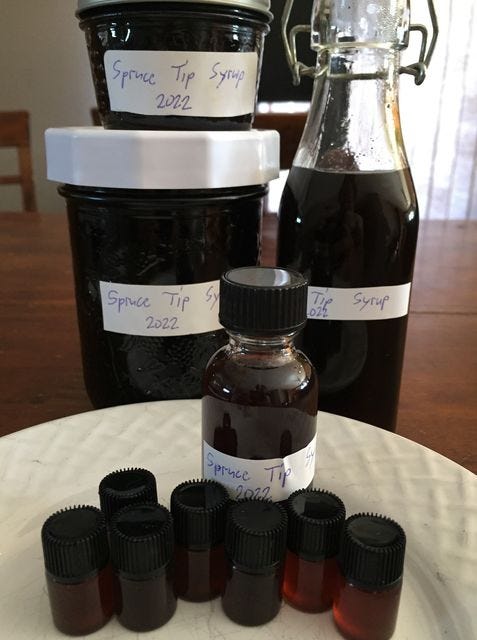
That recipe was a variation on this one: https://foragerchef.com/classic-spruce-tip-syrup/
A big thank you to my friend Ryan Bethel for introducing me to the realm of evergreen syrups. He sent me some of his homemade Fermented White Pine Cone Syrup and it was so tasty I just had to experiment with making something similar my self!
As I am passionate about culinary creativity, practicing preventative medicine through eating a diverse array of nutritious foods and withdrawing my support from centralized food and pharmaceutical industries it is likely that explorations and research into plants and fungi that share similar characteristics (those that can provide ‘medicine’ for the Earth, food for the soul and also medicine and nourishment for the body) will be a recurring theme in my posts.
I hope you enjoyed learning about Eastern White Pine and the many medicinal gifts offered to both humans and the land by White Pine trees and other conifers. It is my hope that this information will empower and inspire you to be able to form lasting symbiotic relationships with trees where you live, increasing your resilience, health and quality in life in both the best of times and emergency situations.
I will be including additional info on other medicinal plants and fungi in my upcoming gardening/recipe book.
You can learn more about my book and order a copy through this link: recipesforreciprocity.com
We can create food forests filled with amazing generous beings such as the Eastern White Pine to create habitat, nurture/protect soil, feed and heal ourselves while leaving this world a little bit more beautiful than it was when we got here for those who will call this place home after we are gone.
Wishing you all longevity, resilience, prosperity, hope and health sovereignty.


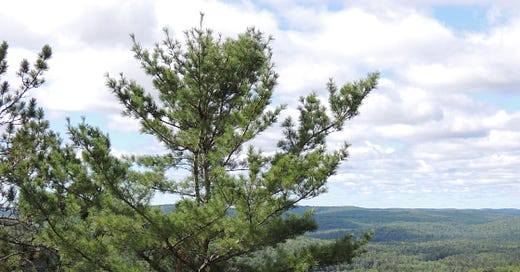



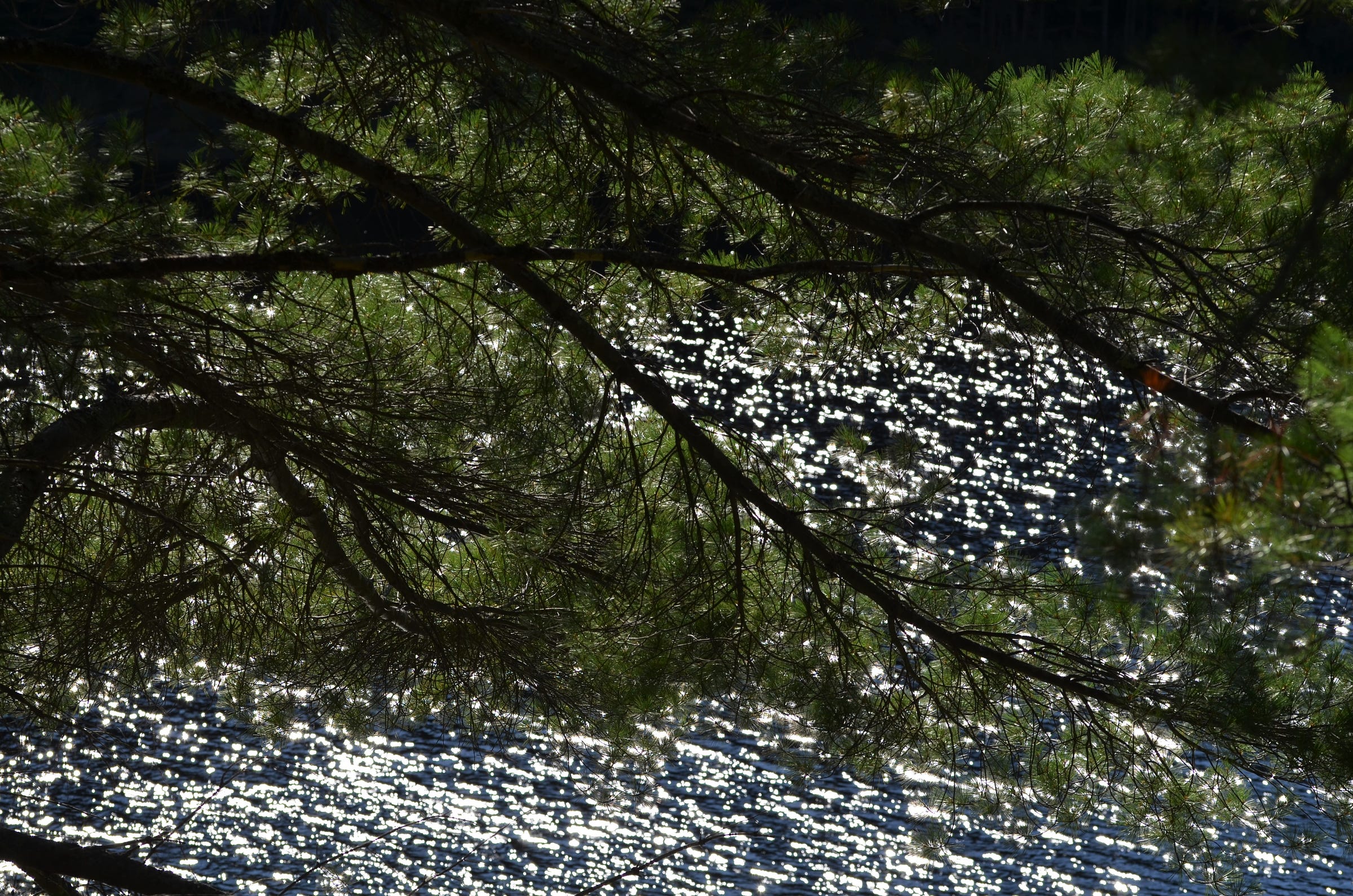


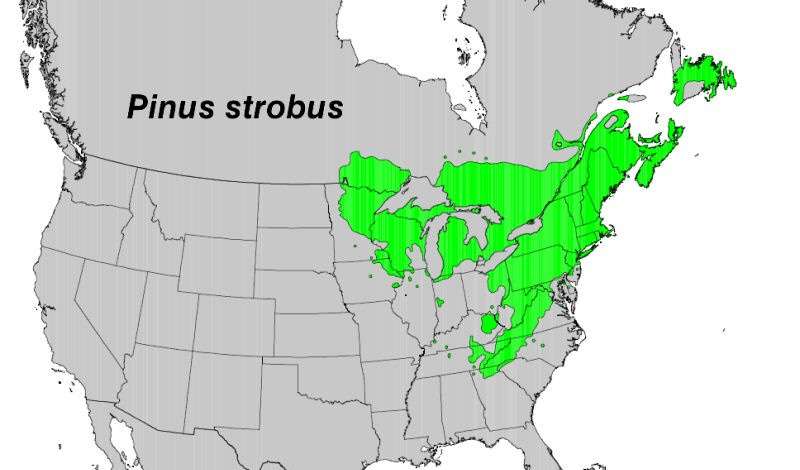
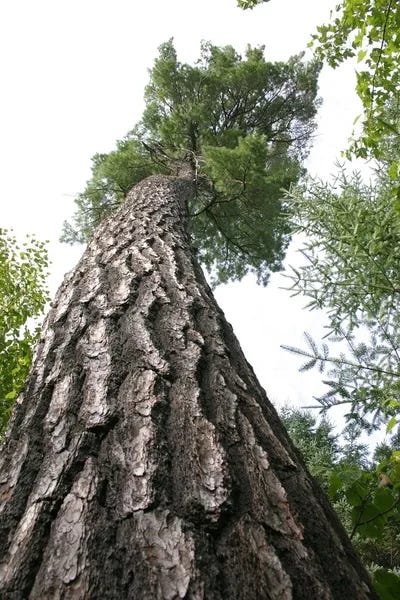

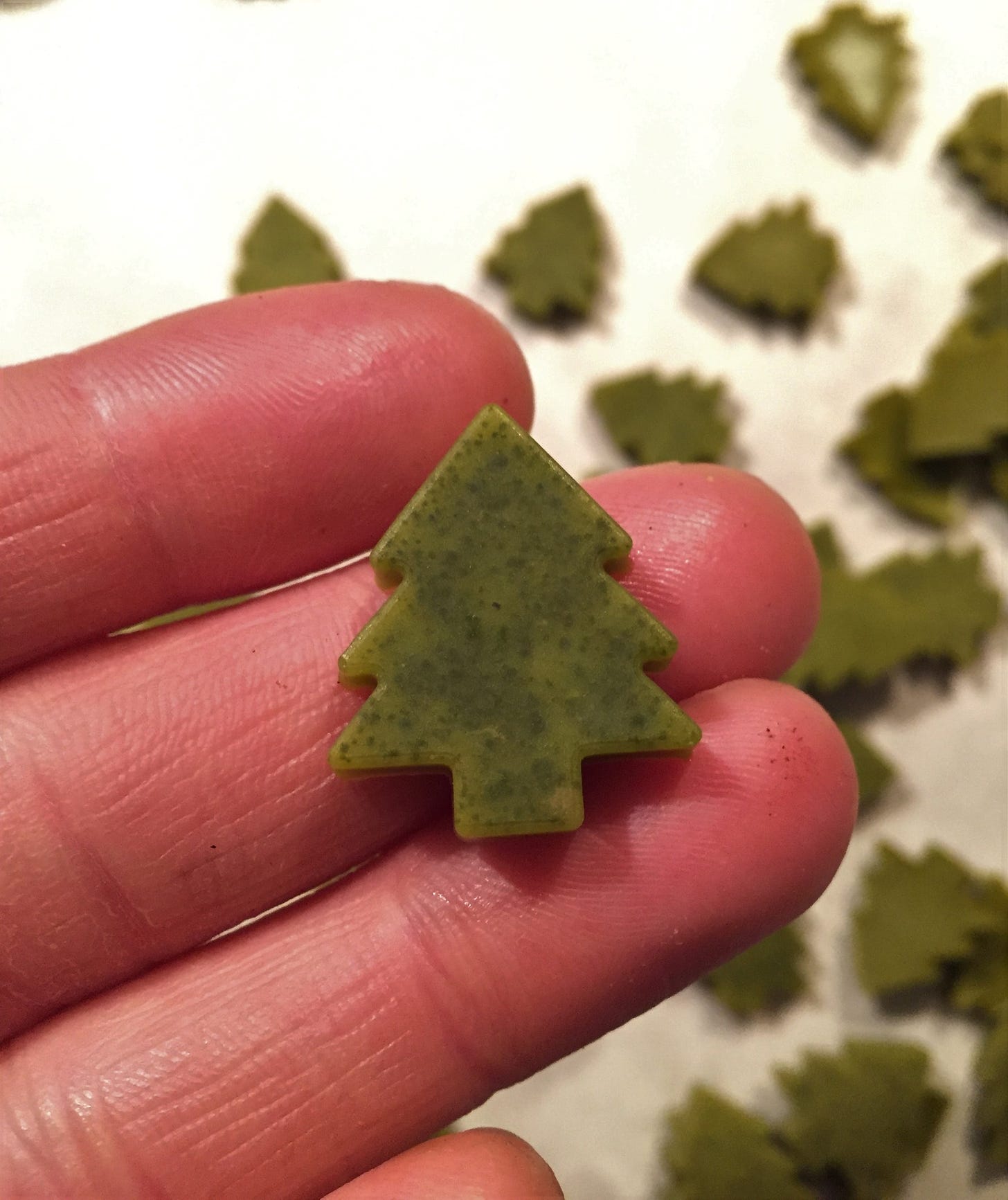
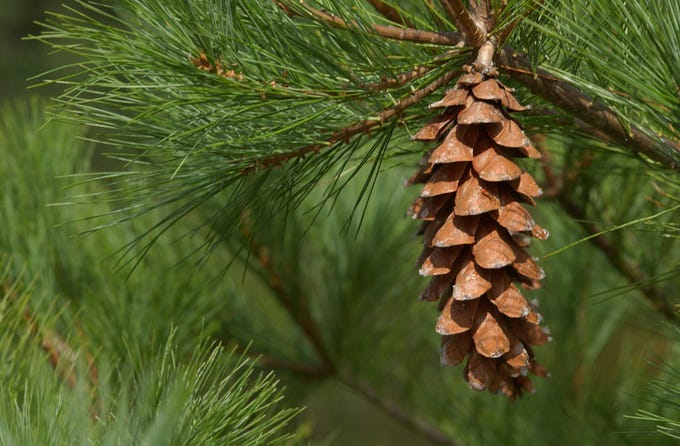

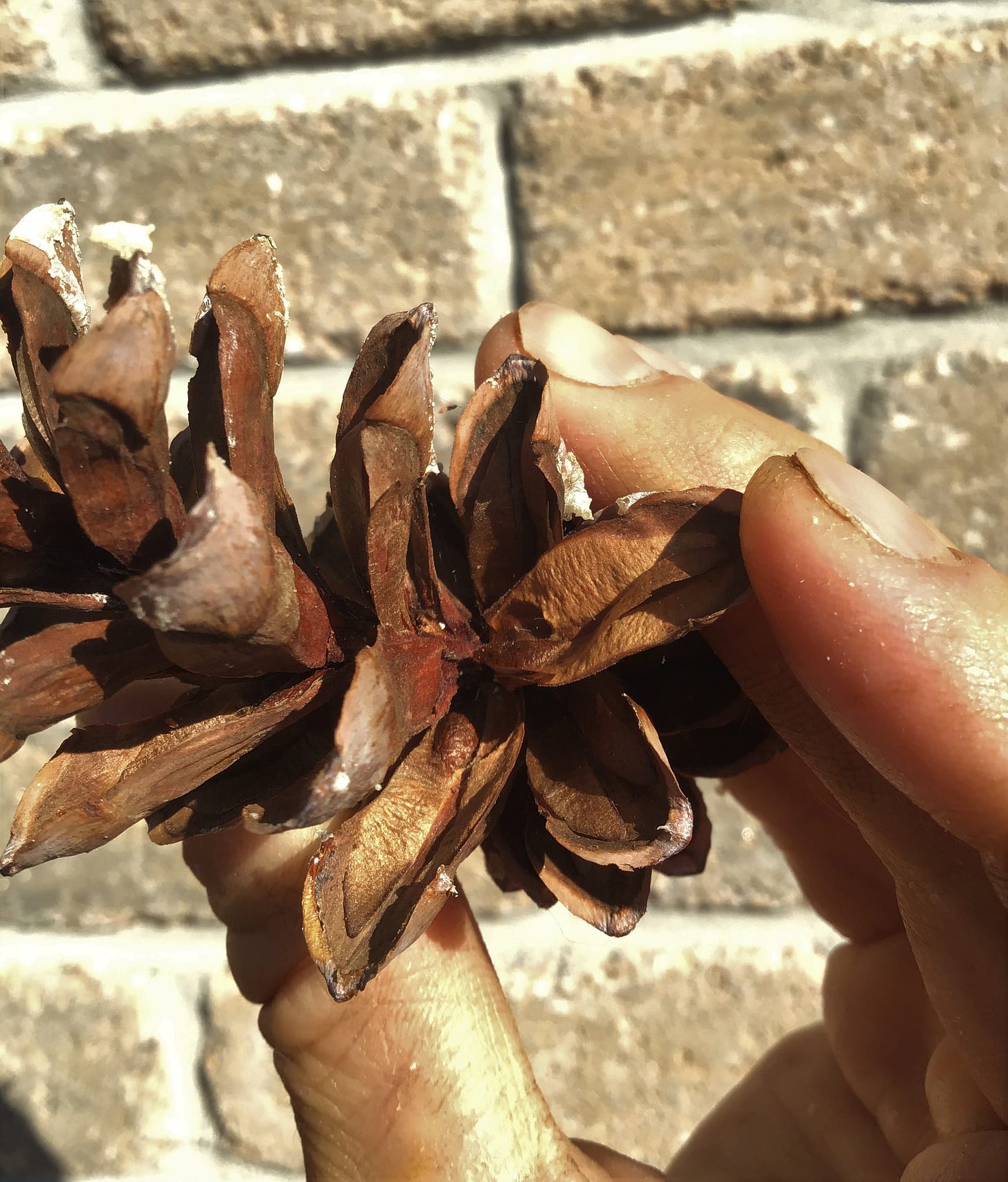
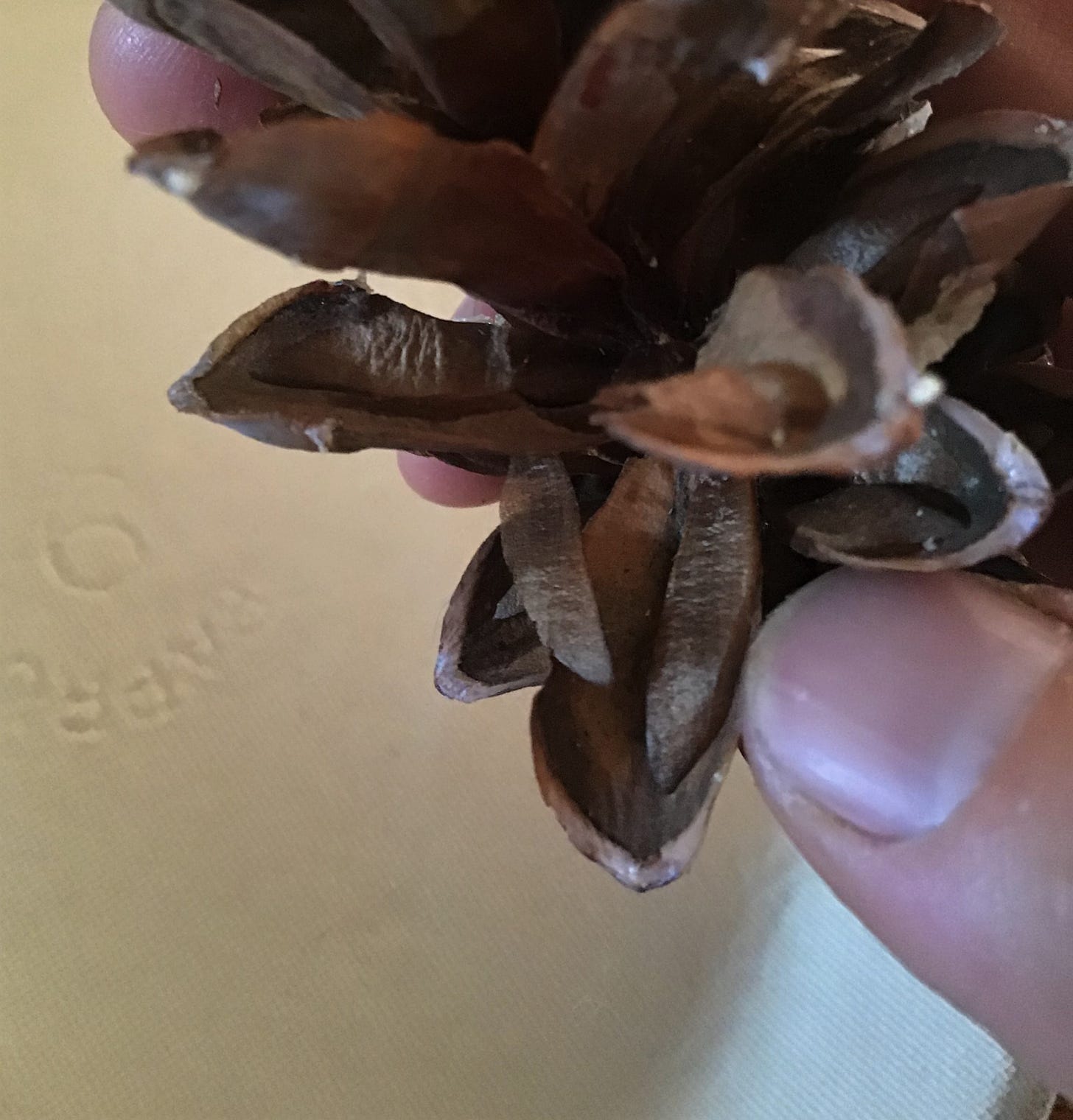
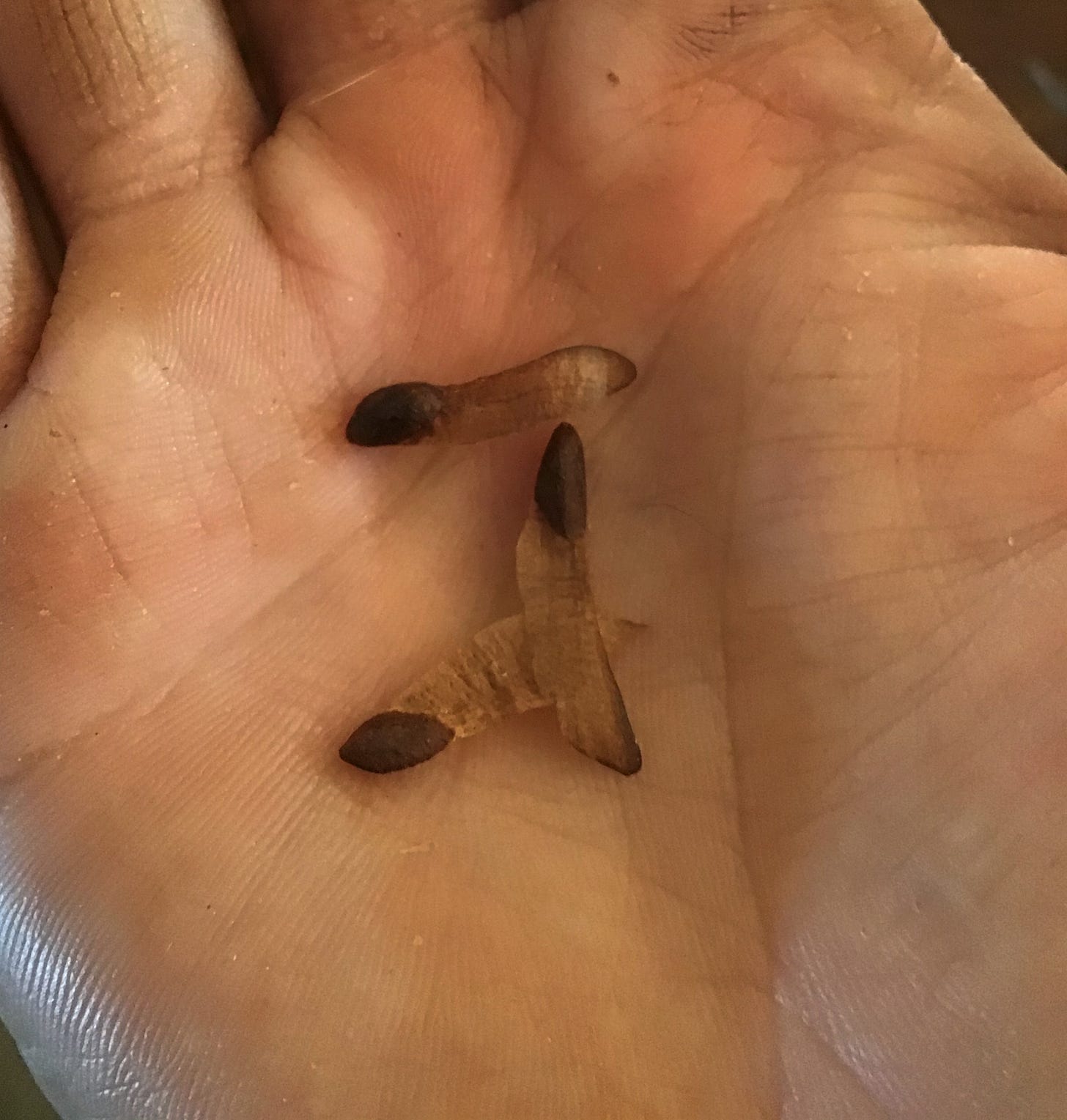
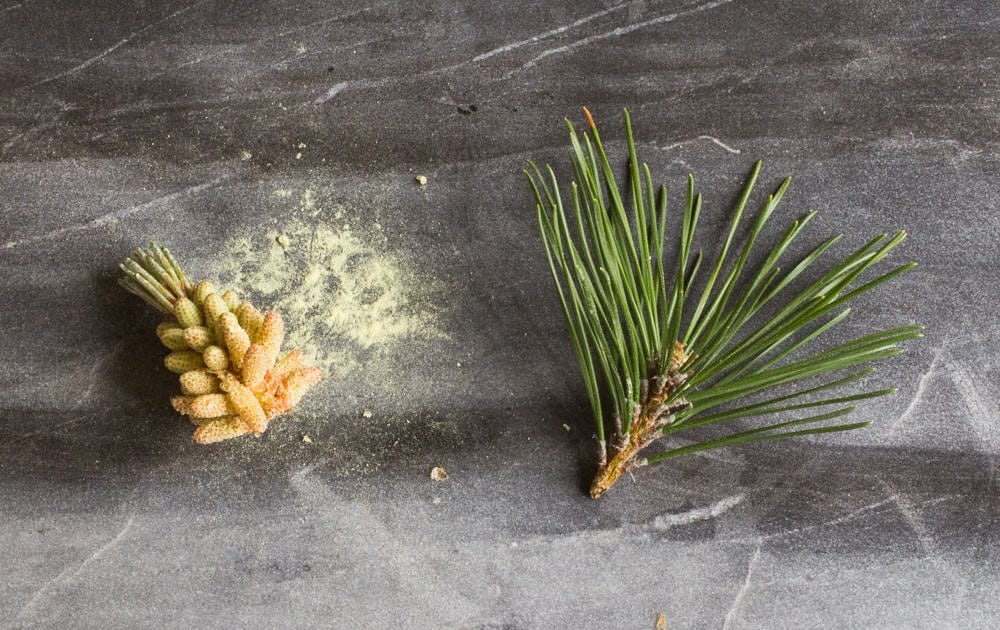
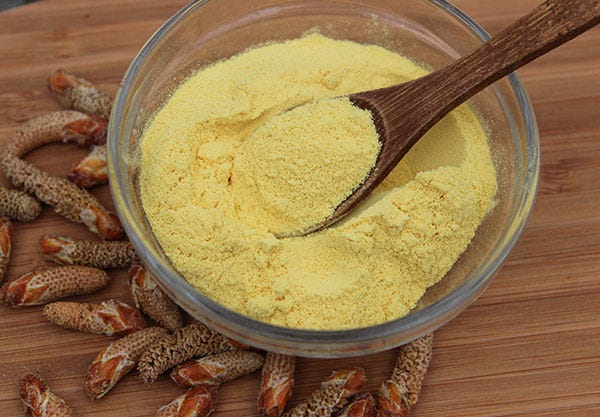

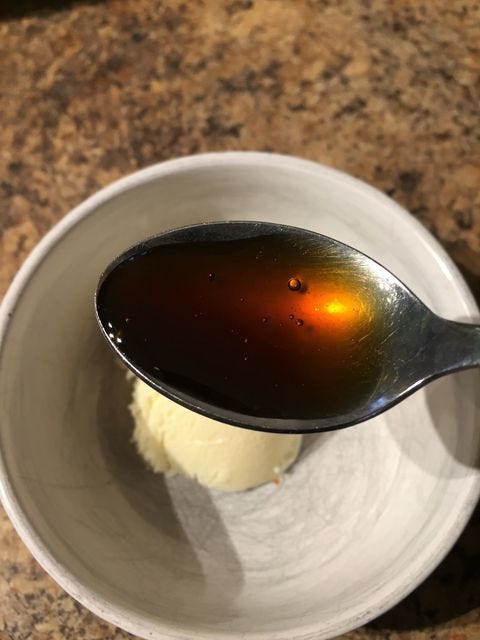
wonderful article, thank you! Do you know anything about pine trees in the Netherlands?
Gavin! We're so in sync! I'm laughing because I just left you a comment on my thread about the trees being cut down and asked if you'd ever read Diana's book "To Speak for the Trees!" I LOVE the book and the documentary SO MUCH! I'm going to savor this article because the Eastern White Pine is near and dear to my heart. I love to slather her oil on me and drink her tea, and I see you have lots of other ideas! :)